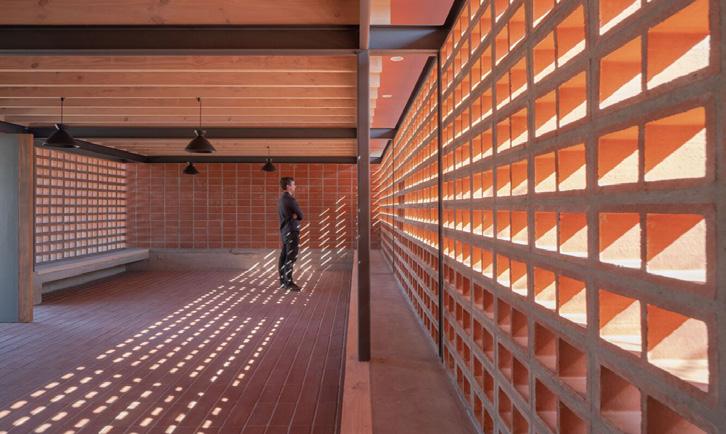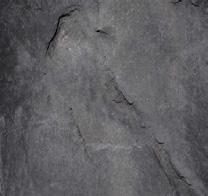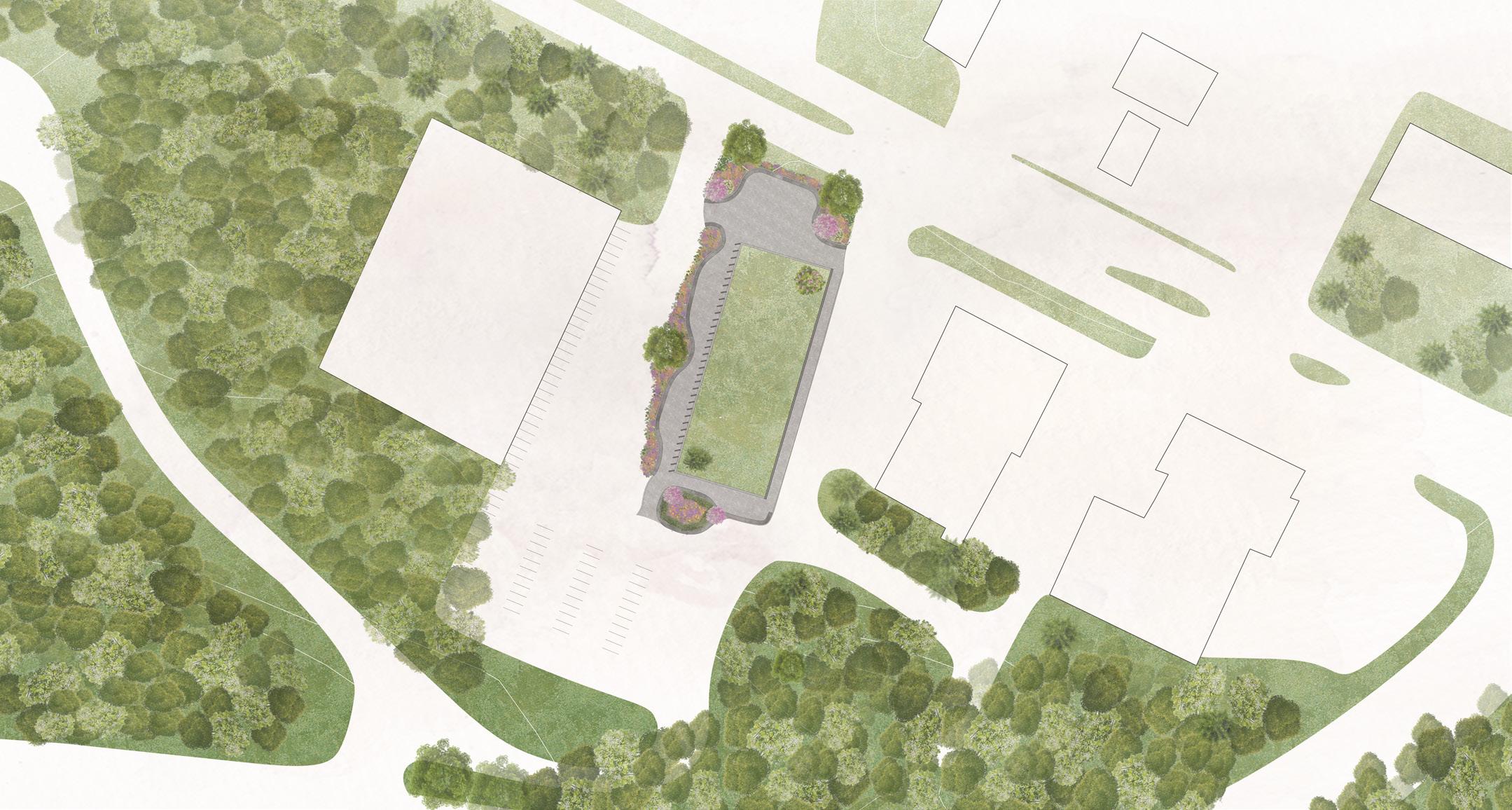

UN_BUILDING
verb (present tense): a design strategy for preserving human memory by challenging the surface of a site by process of excavation and unveiling its relationship to its sense of place, memory of place, and spatial belonging to a place.
The practice of design has a history of the practice of “building” -- processes that include leveling a surface and building up. Over the centuries, this process has buried critical accounts, often those that are negative, dark, and filled with shame, below a surface never intended to be recovered. As a result, families, witnesses, and scholars struggle for decades after, attempting to find reconciliation for these agonizing histories of their friends, families, and allies. This generates questions, conversations, and crises about identity, human morality, worth, and cultural and social heritage, often never reaching a resolution.
Thus, I argue that the strategy of UNBUILDING is an imperative approach to architecture and design practices as a method for REDISCOVERING and MEMORIALIZING these lost legacies. This thesis will explore how architecture should be a method of excavating narratives that have been buried, lost, and forgotten by society, and argue that these rich frictions play a crucial role in present and future collective identity and memory. This will advocate for the practice of architecture as a method of providing HEALING, thus DIGNIFYING and memorializing that which society and history have concealed.
This thesis will EXCAVATE the history of the DeJarnette Sanitarium in Staunton, Virginia, a 20th-century private asylum for middle-income patients, that was separate from the government-funded state mental health hospital. The design proposal will focus on the eugenics program operated by Doctor Joseph DeJarnette in the mid to late 20th century, specifically the abuse of minority female groups in the area of Staunton through forced and undisclosed sterilization, then legal under Virginia law. The proposed site is adjacent to the Frontier Culture Museum and lies at the intersection of I-81 and I-64, a crucial area of growing urbanization of the city, but one that has deeply embedded historical roots. The practice was brought under state control in 1975, then transformed into a children’s hospital as the “DeJarnette Center for Human Development,” until 1966 when the center was relocated to Western State Hospital in Staunton, closing the original facilities permanently. Little to no effort to reconcile the past was performed by the state, besides offering a small reparation settlement to families decades later. Today, these buildings, massive in stature and real estate and once the “frontside” of the city, stand abandoned at the crest of the hill overlooking the Frontier Culture Museum, forever casting a shadow over Staunton as the parasitic “backside”.
My research proposes a non-traditional exhibition space that would bring to light this dark and hidden part of Virginia’s history, specifically memorializing the lives of women whose humanity was stripped from them by the white elite of Staunton in the 20th century. By looking at existing memorials and exhibitions, this proposal will challenge the traditional platform for representation and incorporate technological systems and explorations that would devise a multi-sensory experience for visitors, by integrating the first-person narrative of these patients told through journals, oral stories, and medical records. It includes an opportunity to include the abandoned structures of the sanitarium, as perhaps a space for remembrance or a background set to the present actors, therefore recontextualizing its existence. This thesis intends to explore the impact of the built environment on mental health and investigates material assemblies and tectonics that generate spaces of healing, both individual and collective. Therefore arguing that this dark narrative cannot become a neglected part of Virginian history, as a vital footprint on the COLLECTIVE IDENTITY of present and future generations.
The theoretical framework of this thesis includes extensive research via the lenses of medical practices, government and state regulations and laws, and personal accounts, including investigating Staunton at the scale of the city and the home. Specifically gathering accounts from present and past actors, like journals of patients during this era, lawsuits against DeJarnette, and the modern Western State Hospital records, protocols, and history, as well as the state lawsuits and reparation attempts. This will include research on the overall population trends and birthrates of the city before, during, and after the imposition of this program, the depleting populations of indigenous and African American groups, and timelines on activism trends and campaigns in the city. It will also be critical to examine state, nationwide, and global practices of eugenics and sterilization to understand Staunton’s vulnerability and susceptibility.
This proposal aims to discuss how historical narratives play a vital role in UNITING HUMANITY across time, place, and circumstance and propose the strategy of UNBUILDING as a new method to instill into design strategies, to acknowledge where we have come from, and how we plan to do things differently.
page 4 - 5 : Project Statements 100 | 25 | 6
page 6 - 7: Research Questions
page 8 - 15: Annotated Bibliography and Literature Review 10 - 11| Literature Review
12 - 15| Annotated Bibliography
page 16 - 29: Design Genealogy
18 - 23 | Heritage of Human Memorialization
24 - 29 | Along the Appalachian: Landownership + Displacement
page 30 - 35: Precedent Analysis 32 |
|
page 36- 51: Design Interventions
38 - 39 | UN_BUILDING: Memorializing the Legacy of Western State Hospital 40 - 43 | Intervention 1 | Memorial to Carrie Buck 44 - 47 | Intervention 2 | Legacy Markers at the New Cemetery 48 - 51 | Intervention 3 | Memorial to the Unnamed Victims of VA Eugenics
O J E C T S T A T E M E N T S
100 100
This thesis will implore a method of excavating narratives that have been buried and forgotten by society, and argue that these rich frictions play a crucial role in identity and memory. Through investigating the history of Western State Hospital, a network of interventions across 3 of the 5 sites connected to the hospital, including two unmarked graveyards, will activate spatial storytelling. Material assemblies will devise a multi-sensory experience through landform and spatial story-telling explorations. It insists that this narrative cannot become a neglected part of Staunton’s history, as a vital foundation in the collective identity of past, present, and future generations.
A design investigation that promotes an active excavation of the concealed history of Western State Hospital, exhibited through non-conventional spatial story-telling and symbolic methods.
Architecture that reveals, dignifies, and memorializes.
i. How can nontraditional methods of building and representation be used to engage all the senses of visitors on a site?
ii. In what ways can this design proposal challenge the concept of architecture always as a process of addition, sometimes resulting in concealment, by showing that architecture should also be a practice of revealing, reflecting, and reckoning?
iii. What are the benefits and challenges of a design proposal as a method for elevating the legacy of lives that have been forgotten? Can design become a platform for initiating important conversations that history has erased?
iv. How can this design proposal discuss issues of the sense of a place, the memory of a place, and the spatial belonging of a place?
v. How could architecture highlight the frictions of lived experiences embedded in a site by the concept of “unbuilding” a site, through explorations of landform and symbolic spatial interventions?
vi. What architectural strategies can help to make the invisible, visible?
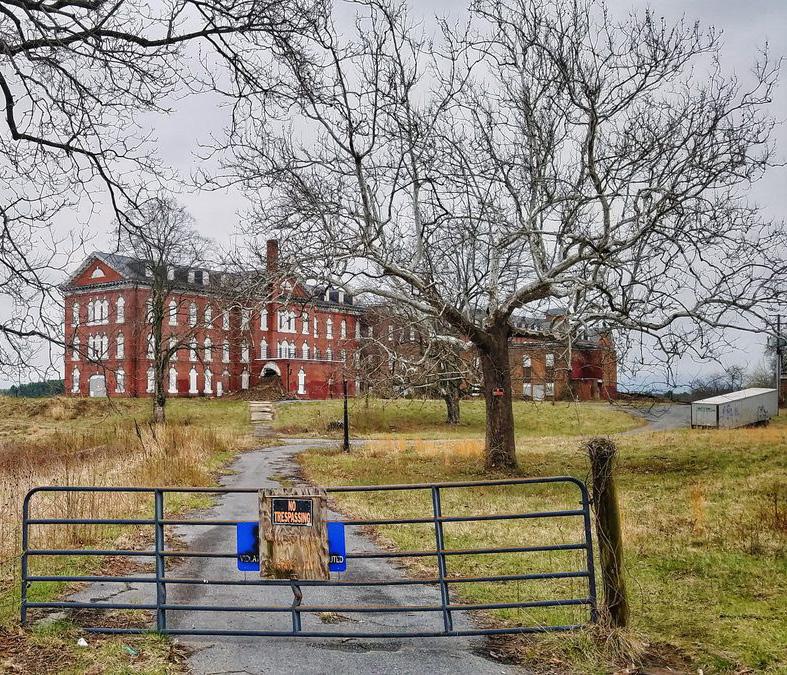
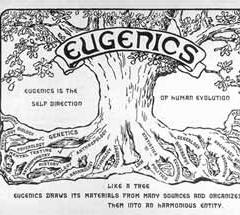
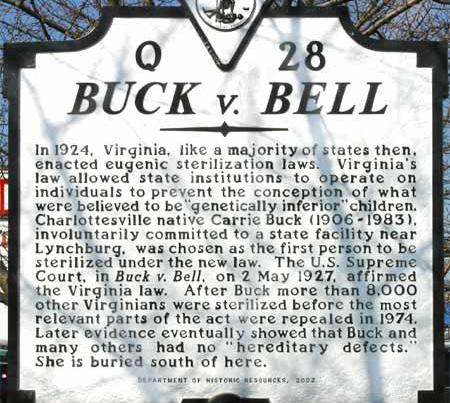
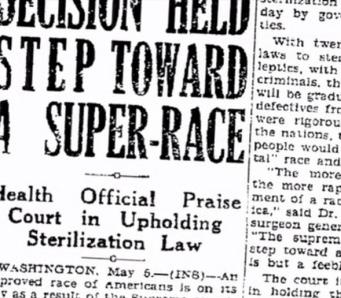
ANNOTATED ANNOTATED BIBLIOGRAPHY
ANNOTATED ANNOTATED BIBLIOGRAPHY LITERATURE LITERATURE REVIEW
E R A T U R E R E V I E W
The sources composed in the included bibliography can be thought of as fingers that are a part of a greater discussion on the ability of architecture to be a healing device. Specifically, these sources are a part of a web that researches and observes the nature of dark heritage and the role it has in the built environment. Each source falls into the topics of understanding negative heritage, precedents on healing architecture, and sources that discuss the dark narrative topic of my thesis. Overall, each source confirms the importance of the design question; why and how can critical design systems be used to restore lost agency in heritage to a culture or community that has had that identity stolen, damaged, or erased?
The article Dark Heritage is a resource that expands the concept of dark heritage to include connected and their perceived and implied understandings. By doing so, the article complexities discussions of dark heritage and dark tourism by considering the economic, political, and social implications. Similarly connected with the journal, Healing Architecture: Evidence, Intuition, Dialogue, in which the author focuses on the architect’s role as a mediator in providing healing spaces. Both resources discuss the implications and impacts of the concept of dark heritage on a site and a community while confirming the significant role design can have in promoting spaces of healing. These articles have been crucial in developing my project development by providing conversations about how design has impacted people and places by confronting narratives that have been erased or forgotten.
The precedent works include conversations about the reconciliation methods communities have implemented to confront their dark narratives. By reading the sources, I learned that a design intervention that deals with dark heritage needs to be highly executed and well crafted to truly provide a community with a space of healing. As seen in The Nuremberg Nazi Rally Grounds, I observed the possible forms of these healing interventions, such as the exhibit and immersive experience Nuremberg implemented on the Rally Grounds. From this research, I specifically became interested in exploring healing interventions that memorialize the history of Virginia Eugenics at Western State Hospital.
This first web of resources assisted me in discerning the community, site, and design solution I will take on for the thesis proposal, by identifying the tangible and intangible resources that distressed communities truly benefit from. By understanding the type and scale of communities that have seen positive feedback from projects built to engage with reconciliation and in thinking about my own interactions with sites of dark heritage, I was able to identify a site that I am connected to personally but one that also is a part of a larger global conversation. This led me to choose the topic and site of the five sites of affiiation to Western State Hospital in Staunton, Virginia, led in practice for 40 years by Dr. Joseph DeJarnette, a leading doctor of eugenics, in the mid-20th century.
The second set of resources is based on further research of the site chosen and the dark narrative it contains. They identify the social, political, and cultural impact of the hospital in Staunton, Virginia, thus, helping me to identify the scope of work to be executed. Specifically, the article, The Sterilization of Carrie Buck, testifies to the lasting effect of sterilization in the 20th century on the following generations of people living in Staunton. This encouraged me to explore a design proposal that functions as a memorial, while also spreading awareness for the advancement of female healthcare and rights. Other sources such as Segregation’s Science: Eugenics and Society in Virginia, and, Medicine, Eugenics, and the Supreme Court: From Coercive Sterilization to Reproductive Freedom, were critical in developing the narrative to be presented in my thesis by weaving conversations about eugenics in Virginia, with national and international laws and aid on reproductive rights.
In closing, the sources included assert the impact of negative heritage on cultural and social identity by discussing past, present, and future trajectories of the failure or success in the restoration of human dignity. By understanding precedents for healing that have been successful and by immersing myself in the narrative of eugenics and suppressed rights, these sources were critical in the development of the scope and argument of this thesis.
Battle, Meredith. Go Down the Mountain. Mascot Books, 2019.
SUMMARIZE: This book by Meredith Battle is a historical fiction book based on real stories and encounters with families displaced by the Shenandoah National Park and Blue Ridge Parkway in the 1930s. The story follows an Appalachian girl who embarks on a journey to discover the truth of her family history and ancestors.
ASSESS: Although I have yet to get my hands on this book, reviews of the book rave about the vividness and genuineness of the book’s ability to flush out many of the lost stories of the Appalachian people. Specifically, the book is said to capture the resettlement of homes and families, sterilization of women, institutionalization of people, and broken government and local business deals.
REFLECT: Many stories of what truly happened to people living in the Appalachian have been lost or erased over the decades. Battle’s ability to interview and digest information and stories from generations of families who still live in the region, presents a narrative that tells the stories of the a history forgotten.
Dorr, Gregory Michael. “Defective or Disabled?: Race, Medicine, and Eugenics in Progressive Era Virginia and Alabama.” The Journal of the Gilded Age and Progressive Era 5, no. 4 (2006): 359–92.
SUMMARIZE: The book delves into the politics of race and eugenics, specifically in the examination of the social structure of the South in the 20th century. It speaks to the scientific research and undertakings of physicians in the South who developed theories on the “scientific explanation” of sexual perversion of the African American male due to ancestral heredity that thus calls for eugenic sterilization to “perfect the race”.
ASSESS: This article provides philosophical, cultural, and political analysis of the scientific evaluation of heredity during the 20th century, specifically its impact on who was deemed a candidate for sterilization.
REFLECT: This article targets the politics of race in the context of eugenics and sterilization during the 20th century, which will be important in understanding why the minority groups in Staunton were targeted and what traits marked them as defective candidates for physical intervention.
SUMMARIZE: Dorr’s book examines the science of eugenics in Virginia, specifically considering the role of the Eugenics Society of Virginia and the theory and practice of eugenics in junction with issues of segregation and discrimination. It explores theories of biological inequalities in the 19th and 20th centuries and the culture of scientific “improvement” of race and biology.
ASSESS: This book carefully considers the culture of eugenics through the perspective of minority races and how social policy was executed through scientific theory and practice. It is an important critique of racial sciences and the manipulation of race and biology, specifically the objectivity and bias often presented in scientific theories relating to these topics.
REFLECT: The critique of objectivity and bias in scientific practice, especially upon the execution of social practice through scientific procedures, is a key critique in understanding how social power can be obtained through privilege that is a result of biology. It will be an important resource in my thesis in exploring how such practices of bias were executed without recognition of the dangers of objectivity.
Dorr, Gregory Michael. 2008. Segregation’s Science : Eugenics and Society in Virginia. Charlottesville: University of Virginia Press. Accessed November 22, 2022. ProQuest Ebook Central. A N N O T A T E D B I B L I O G R A P H Y
Lombardo, Paul A.. Three Generations, No Imbeciles: Eugenics, the Supreme Court, and Buck V. Bell. Baltimore: Johns Hopkins University Press, 2008.
SUMMARIZE: This book by Lombardo delves into the Supreme Court case of Buck v. Bell in 1927, and its landmark ruling deeming states were permitted to forcibly sterilize residents to prevent those considered “feebleminded” on reproducing. The book discusses the problems, fraud, and corruption that took place in this court case that made way for thousands to be sterilized after Buck.
ASSESS: Understanding enforced health procedures by government policy, and in this case, the only rule that permitted a procedure as a tool of enforcing policy, is what permitted sanitariums such as DeJarnette to function for decades in the 20th century. By exposing the corruption of the case in this book, Lombardo speaks to the power of the government over those subjected to discrimination and given no voice due to their place in society.
REFLECT: The potency of this case and wrongful ruling against Buck is a key player in the function and execution of sanitariums in Virginia during this period. In understanding why and who the government deemed unfit for breeding, this book will play a key role in developing the narrative as to why this period in history has been erased from many communities’ identities.
Lombardo, Paul A. “Medicine, Eugenics, and the Supreme Court: From Coercive Sterilization to Reproductive Freedom.” Journal of Contemporary Health Law and Policy 13 (n.d.): 27.
SUMMARIZE: This article delves into the classification of social deviance by medical examination which was backed by said scientific evidence to diagnose someone as an imbecile. It also examines a series of Supreme Court cases between 1924 and 1970 and the development of healthcare freedoms and rights from early fraudulent rulings to the Virginia state later overturning the forced sterilization laws.
ASSESS: While this article looks more closely at the law classifications of mental illness in the 20th century it speaks to the importance of court cases and their development into fair and rightfully ruled cases without being manipulated by bias or taking advantage of people’s lack of knowledge due to their place in society. It speaks more greatly to the rulings against reproductive rights in the US beyond forced sterilization and how the rights movements of the later 20th century played a key role in the healthcare and health rights that we know today.
REFLECT: This article will be important in understanding where healthcare was and how it developed into what we know it today, specifically focused on reproductive rights and liberties. It speaks to the evolution of the perception of mental illness and how systems were developed to better support people rather than taking advantage of them.
Lundin, Stefan. “Healing Architecture: Evidence, Intuition, Dialogue.” Licentiate, Chalmers Tekniska Hogskola (Sweden). Accessed September 21, 2022.
https://www.proquest.com/docview/2421524734/abstract/1DC03BEB175E4C85PQ/1
SUMMARIZE: Lundin Stefan’s Thesis Dissertation title Healing Architecture: Evidence, Intuition, Dialogue,” argues that the architect’s ability to create a design that performs as a healing architecture relies on the architect’s ability to be critically reflective of their own design, practice, and research. This argument takes a strong stance that true healing architecture exists out of the architect’s ability to stand at the intersection of their own objective stance and ability to join in the collaborative conversation of cities and spaces.
ASSESS: Stefan’s dissertation explores multi-levels of architectural healing spaces and how the design proposal and executions were formed under a careful study of how a space could promote active healing.
REFLECT: This article focuses on the architect’s role in becoming a mediator in the design process to promote spaces that truly heal by conducting thorough research and fieldwork rather than promoting design out of subjective stances on how a space could heal.
Macdonald, Sharon. Difficult Heritage: Negotiating the Nazi Past in Nuremberg and Beyond. London, UNITED KINGDOM: Taylor & Francis Group, 2008. http://ebookcentral.proquest.com/lib/uva/detail.action?docID=589616
SUMMARIZE: Sharon Macdonald’s, Difficult Heritage: Negotiating the Nazi Past in Nuremberg and Beyond, provides a careful and in-depth examination of Nuremberg, Germany, specifically studying how the city has attempted to face the implications of its negative heritage. Through this case study of Nuremberg, Macdonald begins to explore and suggest ways in which places with difficult heritage can look towards an informed future that honors a complex history.
ASSESS: Macdonald’s book tackles a larger narrative and conversation about the ability of cities and spaces to face their difficult or negative heritage in a way that begins to shape present identities with informed perspectives of the past, specifically those that have cultural weight. She allows the reader to think about spaces that carry a difficult pass as not a lost cause, but a space for education, opportunity, and redemption.
REFLECT: This book faces the question of how a city with a difficult heritage can become an educational institution of cultural awareness through sensitivity and attentiveness to design, art, and culture. This book presents methods, dialogues, and motivations for why difficult heritage is an important and critical aspect of how a modern civilization experiences a place.
Museen. “The Nazi Party Rally Grounds.” Accessed September 20, 2022. https://museums.nuernberg.de/documentation-center/the-site/the-Nazi-party-rally-grounds
SUMMARIZE: This digital archive holds the active conduction of the transformation of the Nazi Rally Grounds in Nuremberg, Germany as a site that includes an intricate physical and intangible network of exhibitions, plaques, recordings, and tours that detail the negative heritage of the site. By archiving this information both physically and on a digital platform, the authentic narrative of the site is accessible to both the visitor and the digital observer.
ASSESS: The Nuremberg Nazi Rally Grounds Archive is a tool for research in understanding why a site with a difficult heritage needs to address this narrative in a way that is informative, while also respecting the tragedy that occurred.
REFLECT: This is an active and ongoing case study on how a design proposal and solution could strengthen the preservation of the authentic heritage of a site. It shows that the process of facing difficult heritage is a constant, evolving process.
Seitsonen, Oula, and Eerika Koskinen-Koivisto. “* Dark Heritage (2019).” Encyclopedia of Global Archaeology, January 1, 2019. https://www.academia.edu/40170226/_Dark_Heritage_2019_.
SUMMARIZE: Oula Seitsonen and Eerike Koshkinen-Koivisto’s essay titled, Dark Heritage, discusses the development of the concept of dark heritage in the specific context of archaeology and cultural heritage studies. The authors argue that the concept of dark heritage is better understood in the broader context of heritage studies in order to expand the scope of heritage.
ASSESS: This article expands the concept of dark heritage to include connected terms such as “contested heritage,” “negative heritage,” and “difficult heritage,” discussing these terms by their perceived and implied understandings. By doing so, the article complexities discussions of dark heritage and dark tourism by considering the economic, political, and social implications.
REFLECT: “Dark heritage” and its related terms are concepts that are easily detached from their literal meanings by removing the weight of what the terms identify as issues in societies and cultures. This article reinstitutes the significance of these concepts and how they should be used in discussing tragic history in relation to architecture and archaeology.
SUMMARIZE: This book tells the story of a young woman named Carrie Buck, who was sterilized in 1926 without her consent and knowledge. After her first baby was born and taken from her, Buck was deemed mentally “retarded” and an “imbecile” and thus became the first victim of the Virginia Compulsory Sterilization Law. Through the book, Smith and Nelson discuss the development of Eugenics practices and the evolution of legislation concerning sterilization. It focuses on the laws, activism, agency, and feminism surrounding the forced sterilization of women during the 20th century and how Carrie Buck’s life was important in the call for women’s rights.
ASSESS: By telling the narrative for what deemed someone suitable for sterilization due to proclaimed mental impairedness during the 20th century, this book looks at the perspective of eugenics from a personal perspective, as well as a legal and global perspective. It captures the essential corruption of female healthcare during this period and writes about the development of laws and rights to protect females and those diagnosed with mental illness from unsafe and corrupt health procedures.
REFLECT: Carrie Buck was a young, poor, and powerless woman who was taken advantage of by those who had the power and privilege to deem her as “unfit to breed.” This book will play a critical role in understanding what it was like to be a patient in these practices and why this narrative has a dark footprint on many communities to this day. Generations of relatives of patients such as Carrie Buck struggle to understand the malintent against their predecessors and live with the consequences of the harm done against them to this day.
DESIGN DESIGN
G E
DESIGN DESIGN E N E A L O G Y

HERITAGE OF HUMAN MEMORIZATION
EMMA GALLAUGHER
ARH 3613 | FALL 2021 | FINAL PAPER
This final paper argued that UNESCO’s criteria for heritage sites often overlooks the legacy and memorization of human life for the sake of historical, cultural,political, and architectural significance. I argued that the “negative world heritage” of such sites needs to be addressed in a way that memorializes human life and accurately portrays the narrative of tragedy in the bid and inscription as a UNESCO World Heritage Site.
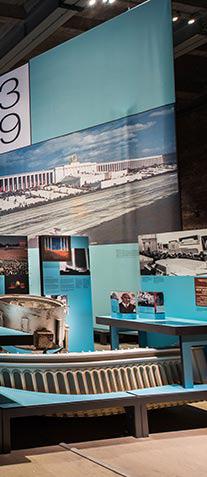
I specifically looked at Tiananmen Square in Beijing, China, and how the proposal for its inscription as a World Heritage site does not include mention of the 1989 Tiananmen Square Massacre. This massacre claimed the lives of thousands of Chinese people and the Chinese government has attempted to erase this massacre from the global public eye. Upon visiting the square, both the local population and foreigners are presented with information about the Square that does not include any information about the massacre. I argue that this failure of inclusion of the massacre in the UNESCO bid does not meet UNESCO’s objective of uniting humanity and producing peace among all nations, but undermines human experience and value.
In comparison, I look at Nuremberg, Germany, the city of the Nazi Rally Grounds, where the city has worked on an installation of plaques around the Grounds which narrate the authentic story of the site. By this, the city has worked to reconcile its history in a way that frames an understanding of human attitudes and the danger of political agendas by promoting preservation of structures of the sake of educational knowledge and understanding, over architectural merit and ignorance.
How could sites such as Tiananmen Square incorporate a program related to its negative heritage and what would that program look like?
RESEARCH QUESTIONS
i. What CRITICAL SYSTEMS could Negative World Heritage Sites use to showcase the difficult heritage of a site that could be EDUCATIONAL, IMPACTFUL, AND HONOR the lives of people lost?
ii. Why do these sites LACK substantial MATERIALS, RESOURCES, AND FUNDS to tell the AUTHENTIC NARRATIVE of the site?
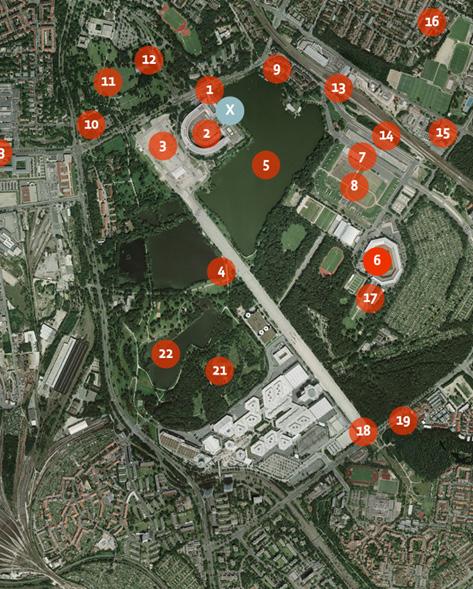
iii. What are the possible representations of negative heritage that DO NOT DIMINISH the history of the site?
iv. Why are World Heritage sites WITH NEGATIVE HERITAGE in MORE DANGER than those WITHOUT?
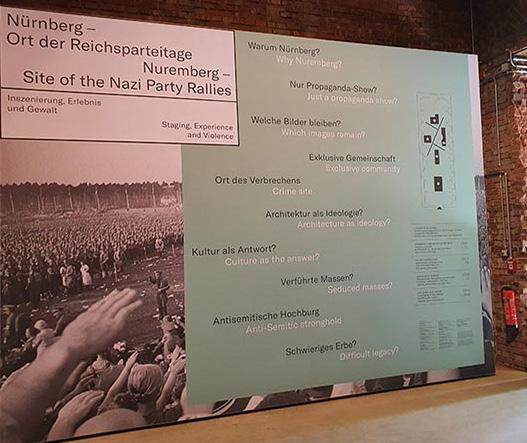

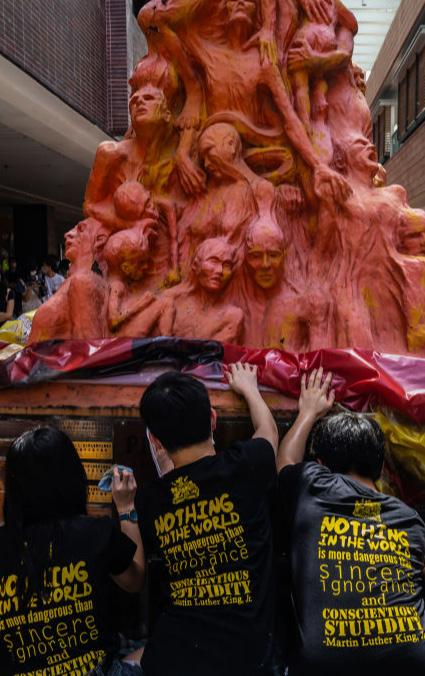
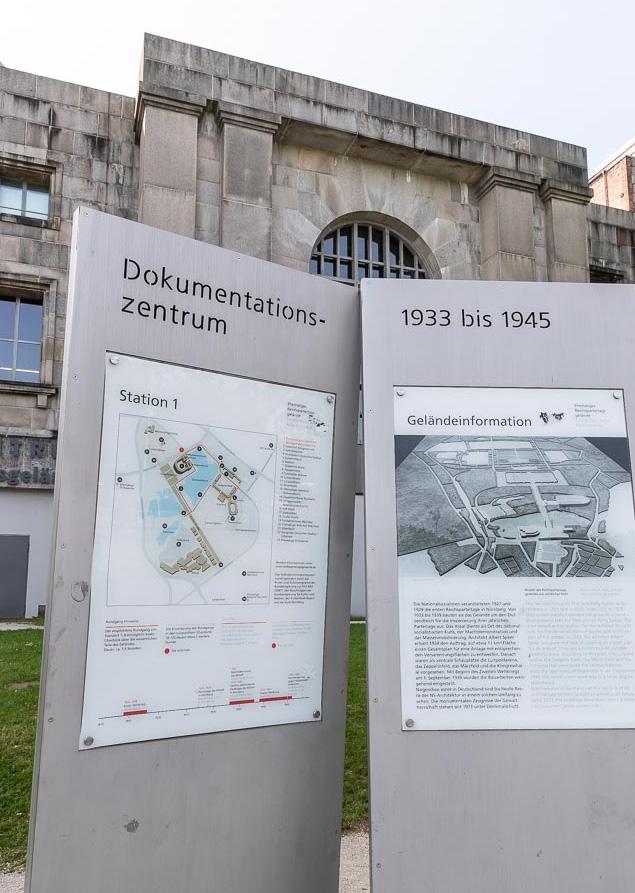

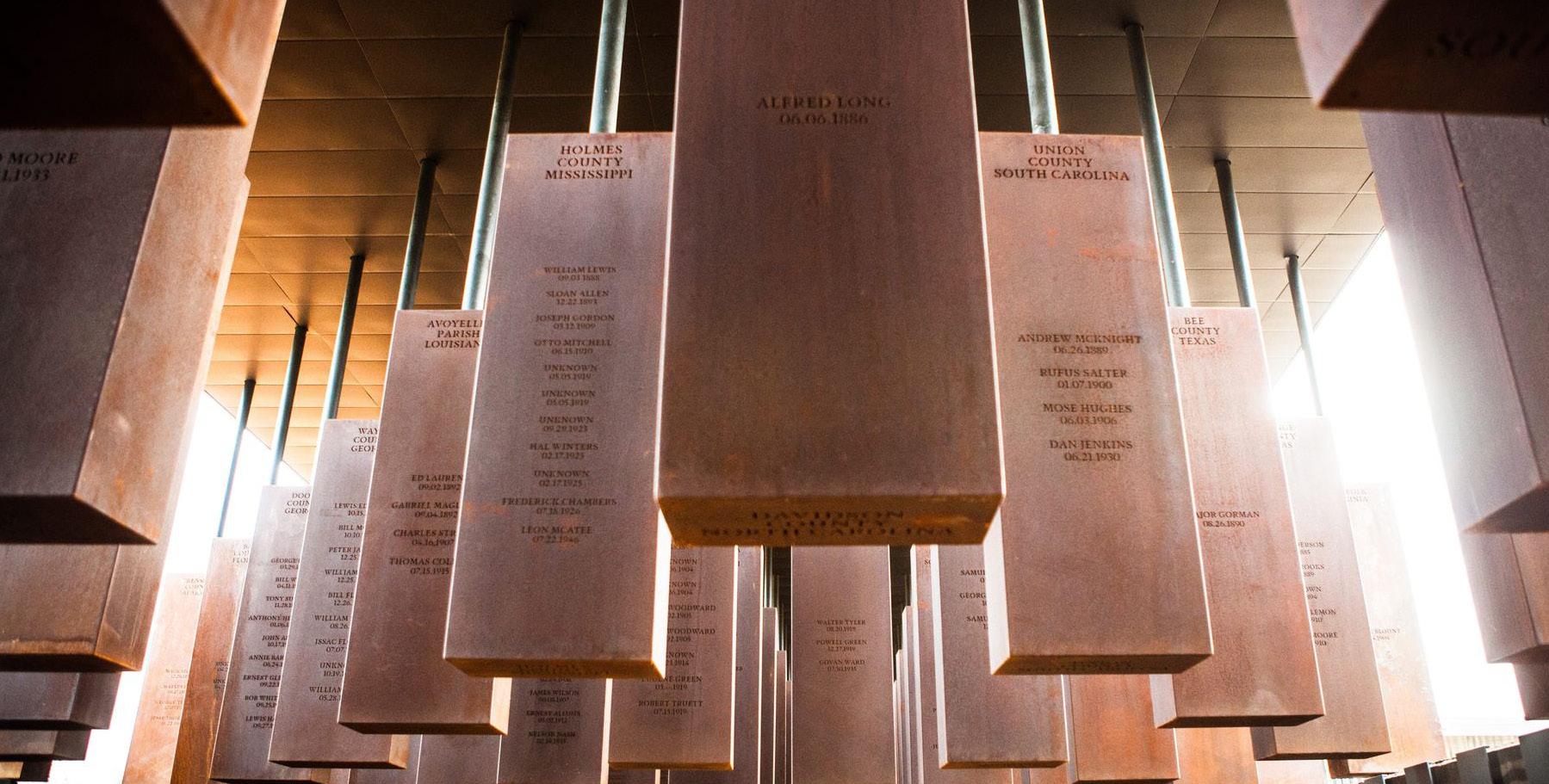
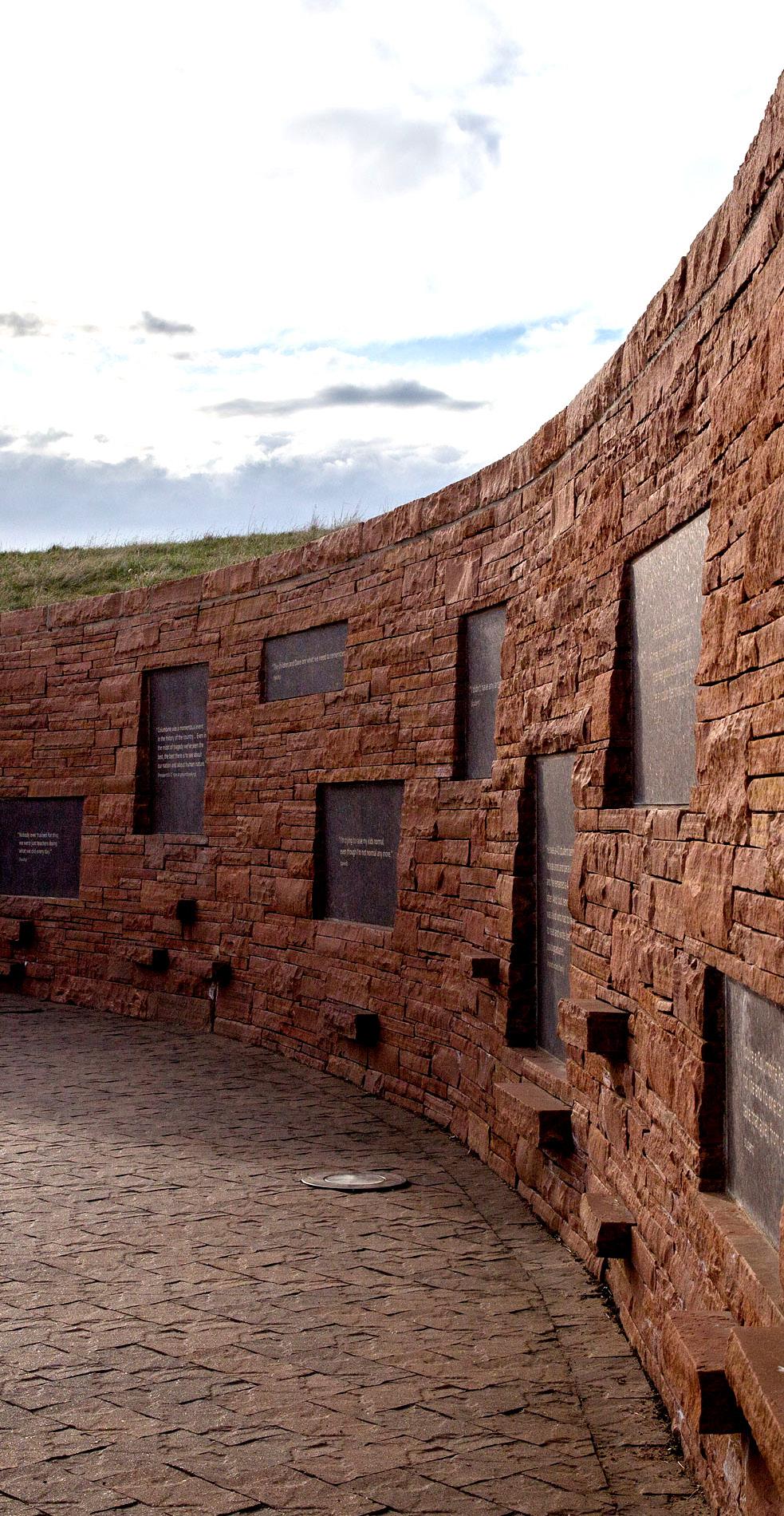


“These are IMPORTANT SITES that BE HUMAN. I think they’re important and try to BETTER UNDERSTAND the



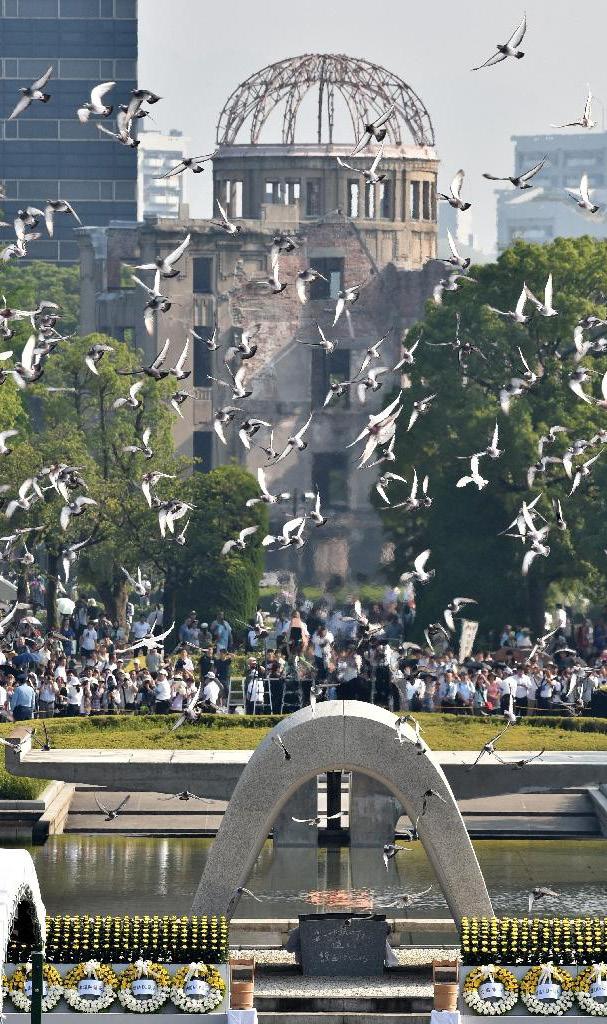
that tell us a lot about what it is to important places for us to REFLECT ON the evil that we’re capable of”
- John Lennon, Tourism Professor at Glasgow University

LANDOWNERSHIP & DISPLACEMENT ALONG THE APPALACHIAN EMMA GALLAUGHER
ARH 3260 | SPRING 2022 | FINAL PAPER
This final paper examines the history, design, and execution of the Blue Ridge Parkway and how the landscape it touches has been impacted as a result. Specifically, it looks at the issues of native people displacement, landownership, and unequal wealth disproportion.
The Cherokee tribes of the Blue Ridge region have experienced great disruption and displacement, as the routes for the parkway cross through various Indian territories. By way of unfair federal policies, these tribes have been relocated to areas where federal authority over Indian affairs has consequently domesticated the “savagery” of Indian lifestyle, beliefs, and culture. These tribes also relied on agriculture and lumber trade for means of food and wage. The exacerbation of timber forests and arable land by the National park Service and federal mandates, depleted what was necessary for the sufficient survival of tribes and their members.

Related, land from generations of Appalachian people was bought or leased out to the NPS, whom destroyed homesteads and farmland with deep inheritance. These generational space and memories were lost forever in the regulation of maintaining the success and attractiveness of the parkway.
Finally, the parkway has brought a mass fluctuation of tourism to the Appalachian region, raising land and home costs. Today, some of the grandest real estate sit in close proximity to the Parkway, rising beyond what the lower to middle class population can afford. Thus, generations of families are being driven out from their native landscapes.
This paper concludes by arguing that while the Parkway has flourished the last fifty years and been popularized by recreational propaganda, the NPS has failed to preserve the people and cultures it has stolen from and destroyed. It must do more to protect these landscapes and experiences to genuinely thrive as a cultural center.
What could the NPS mandate to create a program that preserves and tells the narrative of cultures it has touched?
RESEARCH QUESTIONS
i. How did the CONSTRUCTION and MAINTENANCE of the Blue Ridge Parkway FAIL TO PRESERVE the PEOPLE AND CULTURE of indigenous tribes and native farm owners in the region?
ii. Could the EXISTING and EVOLVING EXCLUSIVITY of RECREATION and LANDOWNERSHIP across the Parkway lend to a large DISPARITY in ECONOMIC DEMOGRAPHICS in the region?

iii. How can GENERATIONAL HERITAGE, CULTURE, AND LANDSCAPES be PRESERVED in federal infrastructural plans in order to create an AUTHENTIC CULTURAL CENTER?
iv. In what ways could the DESIGN of the Parkway REMEMBER the VERNACULAR STYLES of the Appalachian region?
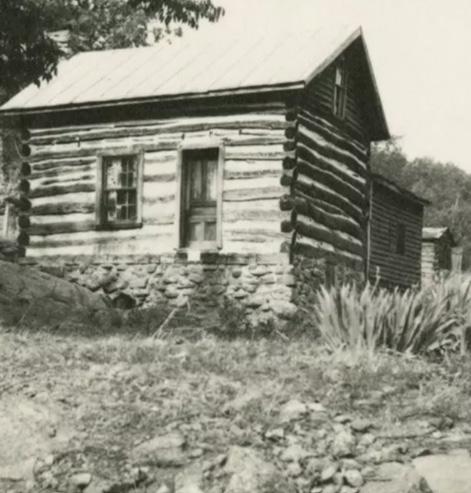


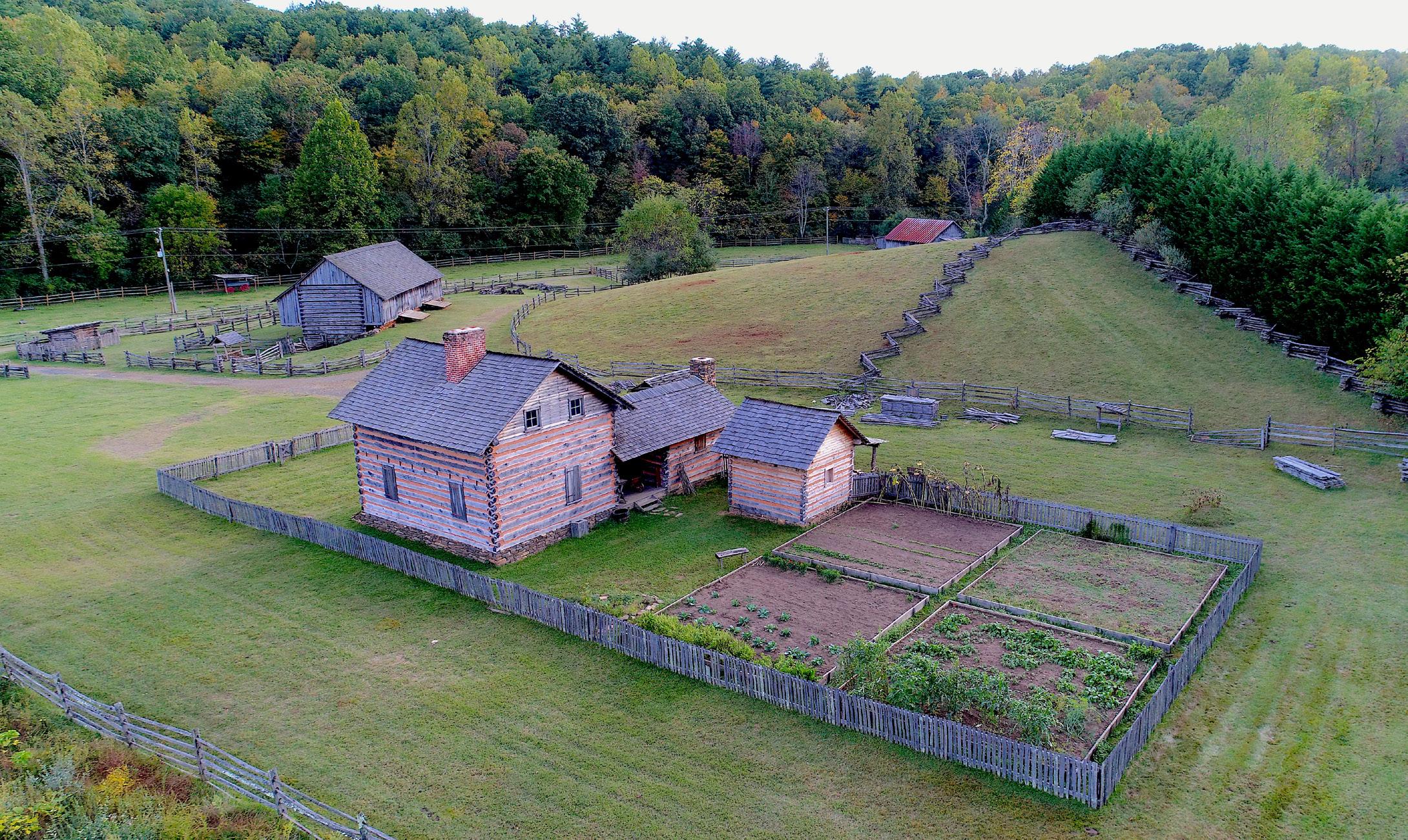
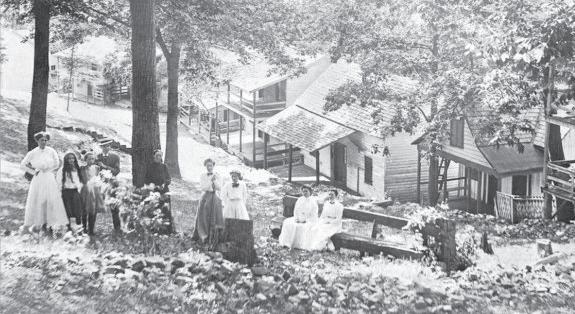
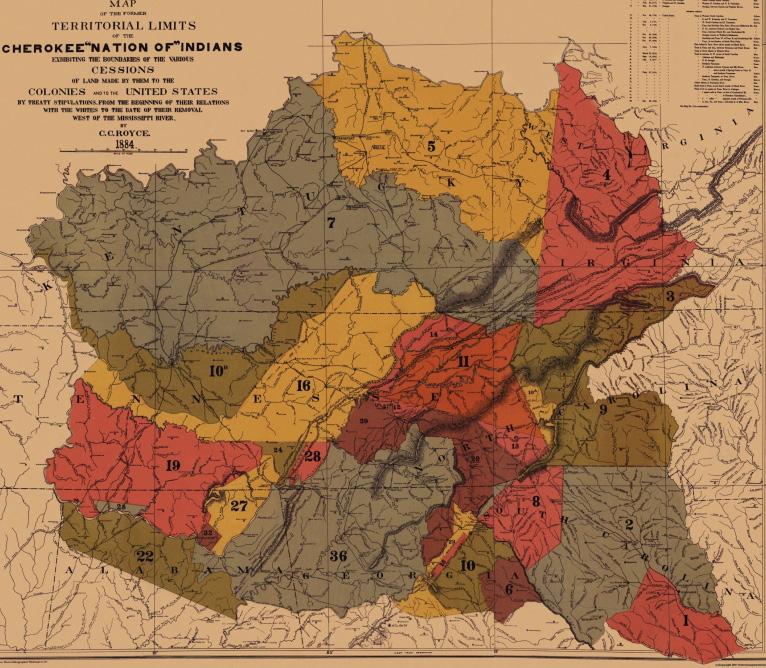
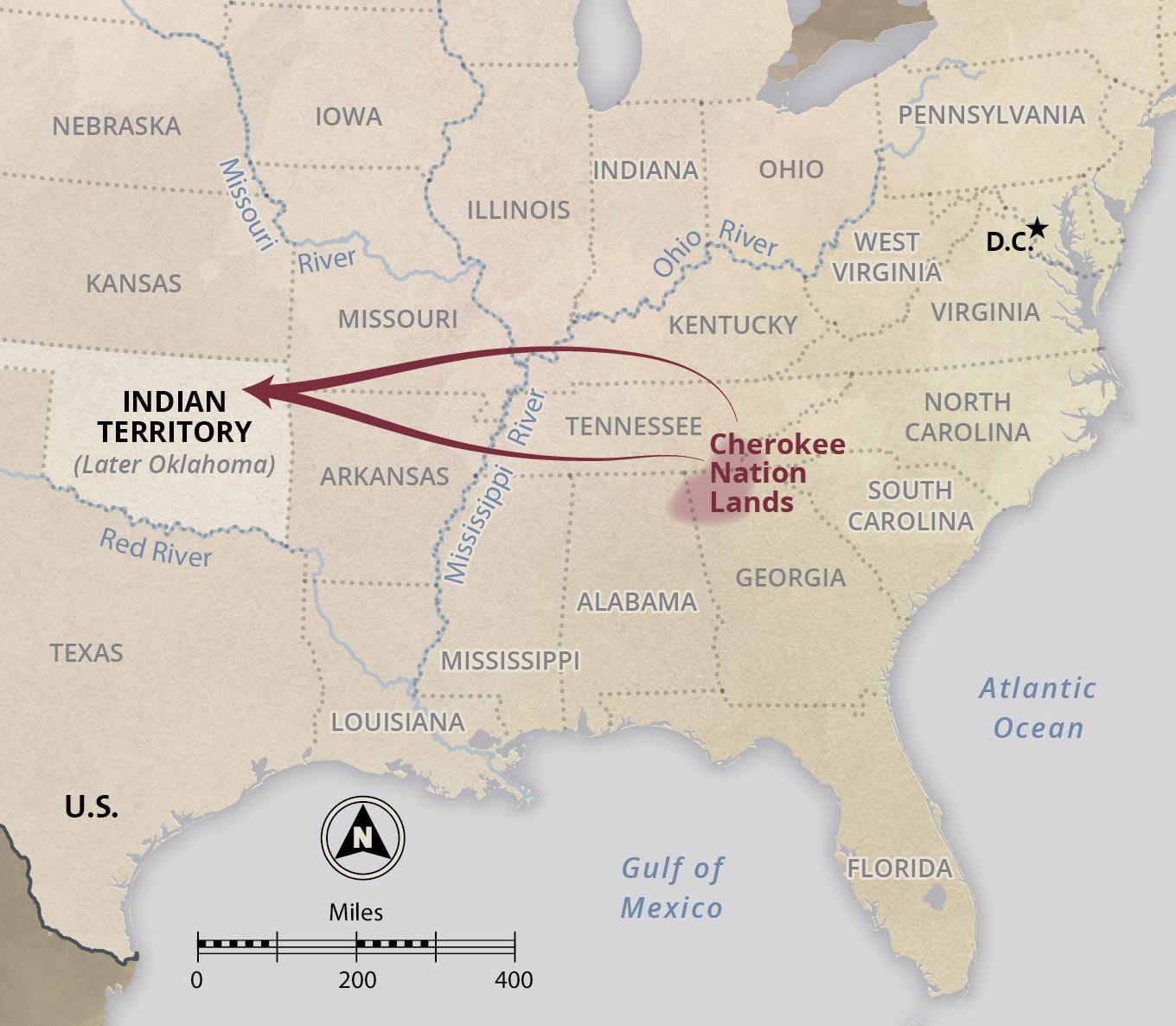
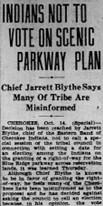
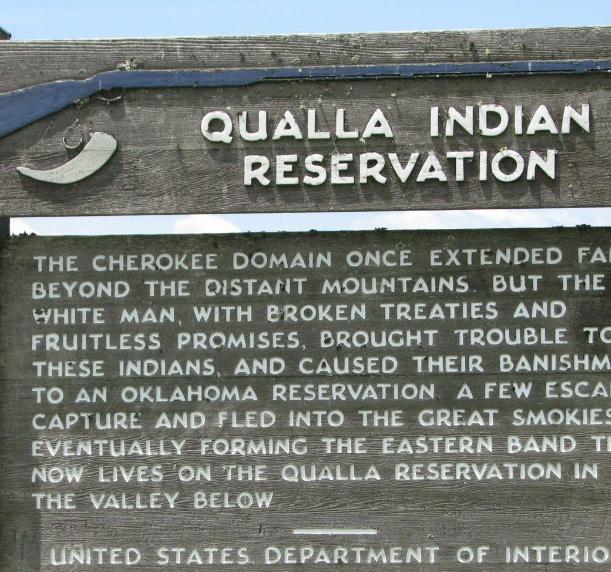
PRECEDENT PRECEDENT
PRECEDENT PRECEDENT A N A L Y S I S
P R E C E D E N T A N A L Y S I S

subsurface
void | earth | excavate


perspective | material |spatial



sky
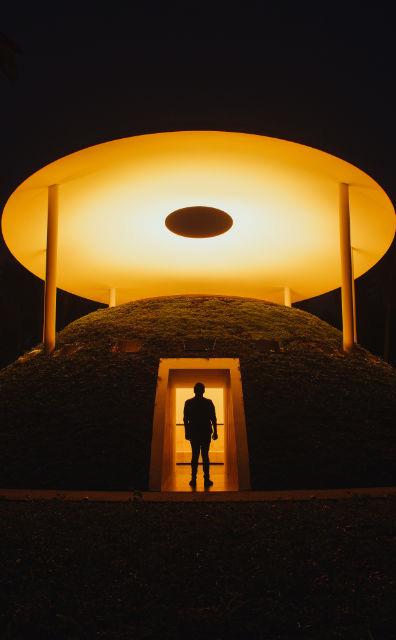

air | sun | moon
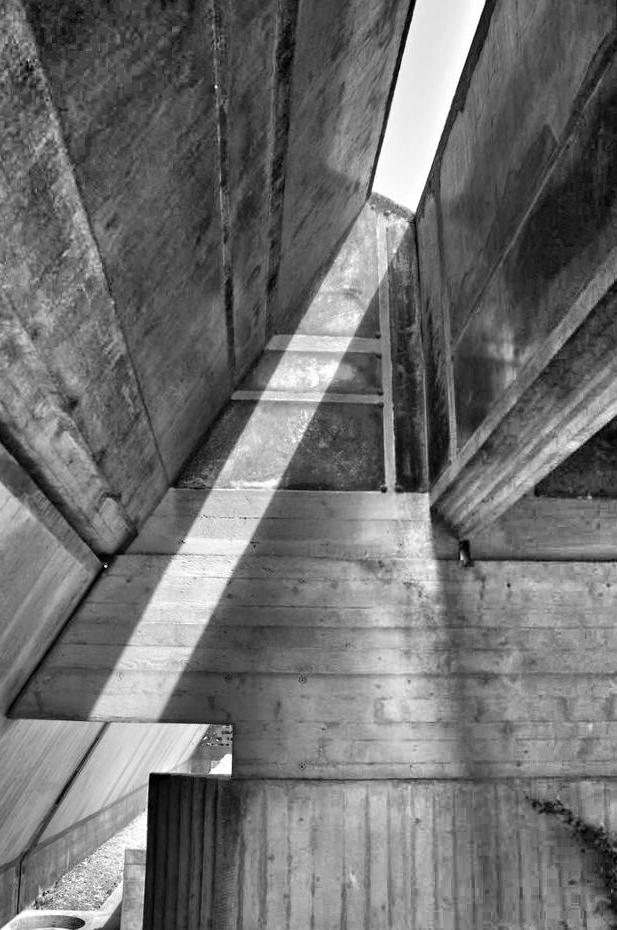

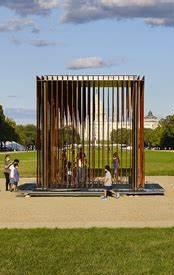
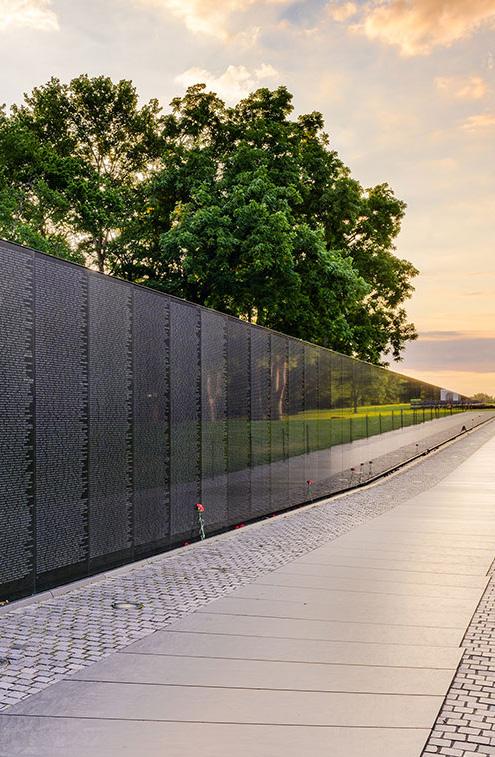
DESIGN DESIGNINTERVENTIONS
DESIGN DESIGNINTERVENTIONS
In 1924, Virginia enacted the Virginia Sterilization Act of 1924 which would legalize the practice of compulsory sterilization of any patient afflicted with hereditary forms of insanity and imbecility. The same year, Virginia adopted the Racial Integrity Act which prohibited interracial marriage and called for only two racial categories, described as “white” and “colored”. As a result, the practice of eugenics and forced sterilization in Virginia targeted minority people groups and have the power of medical health and agency to elite, white men. Over the span of 50 years, institutions across Virginia would sterilize over 8000 people. That number is more than 10% of 60,000; the number of sterilizations across the nation. Of those 8000, 67% of those sterilized in Virginia were female, and of that population, 57% were African American, 22% were Indigenous, and 21% were Latina.
One of those institutions founded was the Western State Lunatic Asylum, now known as Western State Hospital. Western State’s history is deeply tied to a medical practitioner, Joseph DeJarnette, a 20th-century doctor specializing in eugenics, specifically forced sterilization, who served as Western State’s director for over 40 years. Performing hundreds of sterilizations during his appointment and voicing admiration of Nazi Germany’s aggressive approach to eugenics, the era of forced sterilization in Virginia can be greatly attributed to DeJarnette’s practices at Western State. Presently, there has been little effort on behalf of the state to reconcile this dark past.

T Today, five sites of affiliation to Western State still stand in Staunton. These include: two graveyards with approximately 2,400 unmarked graves, the original Western Lunatic Asylum, now the Blackburn Inn, the DeJarnette Sanitarium, which sites as a parasitic shadow at the entrance to the city, and the present-day Western State Hospital complex.






As an institution with more than a century of history in Staunton, the present-day Staunton identity is deeply removed from the impact of the hospital, while the footprint of the institution lies deeply embedded in the urban, social, and political landscapes of Staunton. While much of the history lies unacknowledged, this footprint has a deeper thread of memory on Staunton than presently recognized. This project aims to memorialize the lives of people impacted by eugenics and forced sterilization and expose a shadow over Staunton that has never been named but calls to be revealed and reflected upon, to restore. The scope of the project focuses on 3 of the 5 sites, including the original Western Lunatic Asylum, the old unmarked cemetery, and the new graveyard behind the Blackburn Inn.

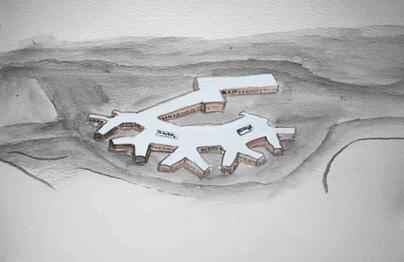
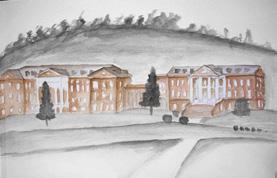
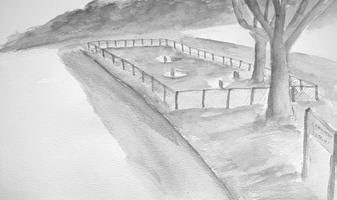


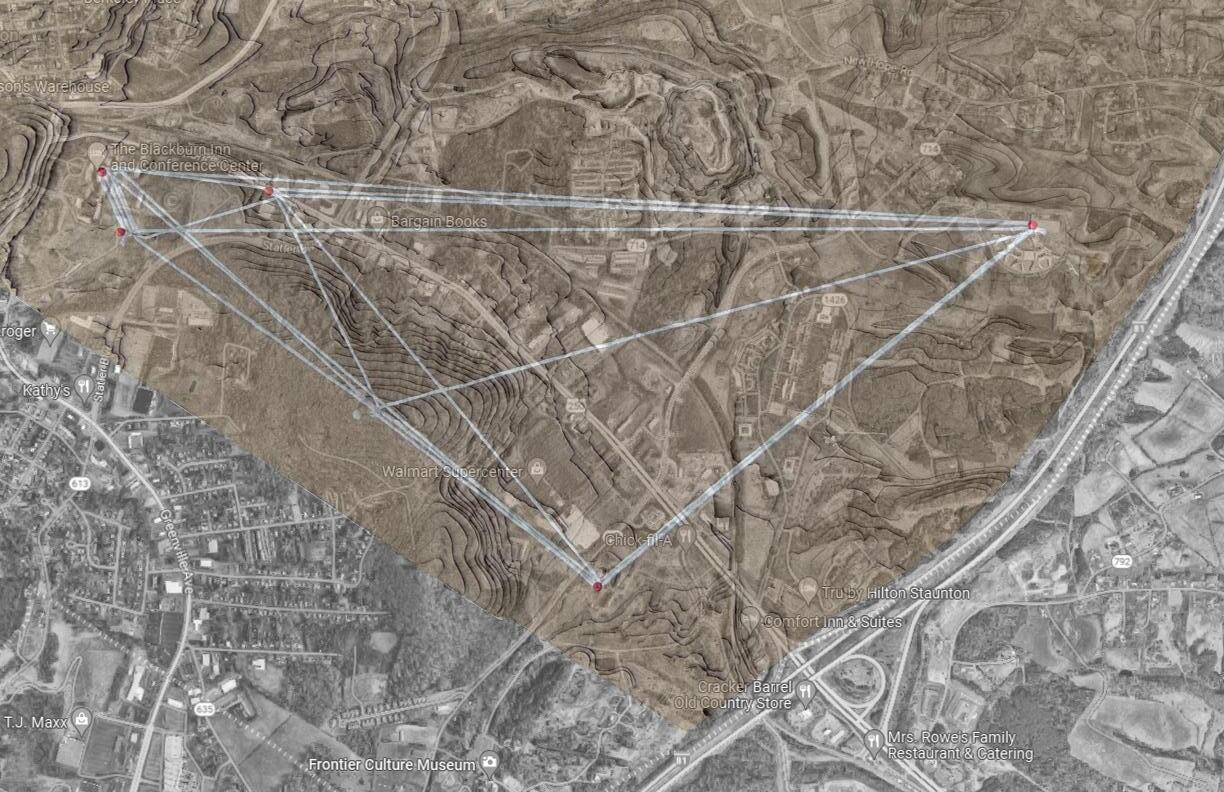
MEMORIAL TO CARRIE BUCK
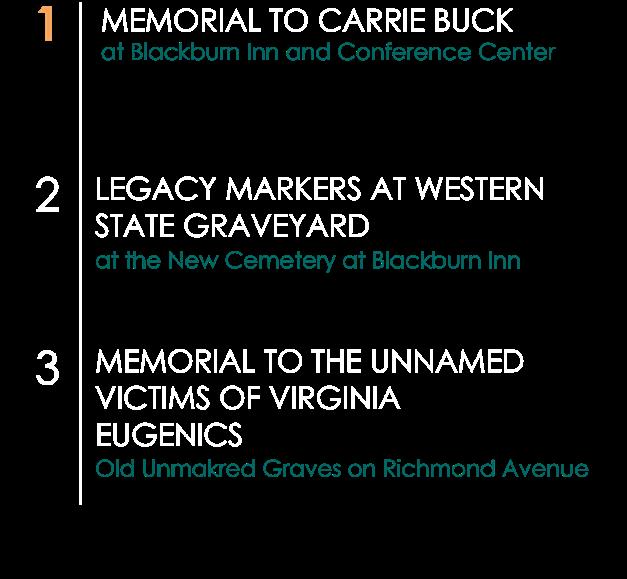
EXISTING SITE PICTURES




The first intervention is a Memorial to Carrie Buck at the Western State Lunatic Asylum, now the Blackburn Inn. Carrie Buck was the first person legally sterilized in Virginia, after her case was argued in the 1927 Buck v. Bell Supreme Court case, holding the law that forced sterilization was legal to those deemed unfit.
The geometry of the memorial is informed by the geographical relationship between 4 cities of relevance in her life: Charlottesville, where she was born, Lynchburg, where she was sterilized, Staunton, where she lived for a period and symbolizes DeJarnette’s testifying in her court case, and Waynesboro, her final resting place.


The memorial creates a contemplative space for remembrance, with a wall of inscriptions of her life, and gathering spaces throughout the landscape, hoping to draw visitors from the conference center to these spaces.
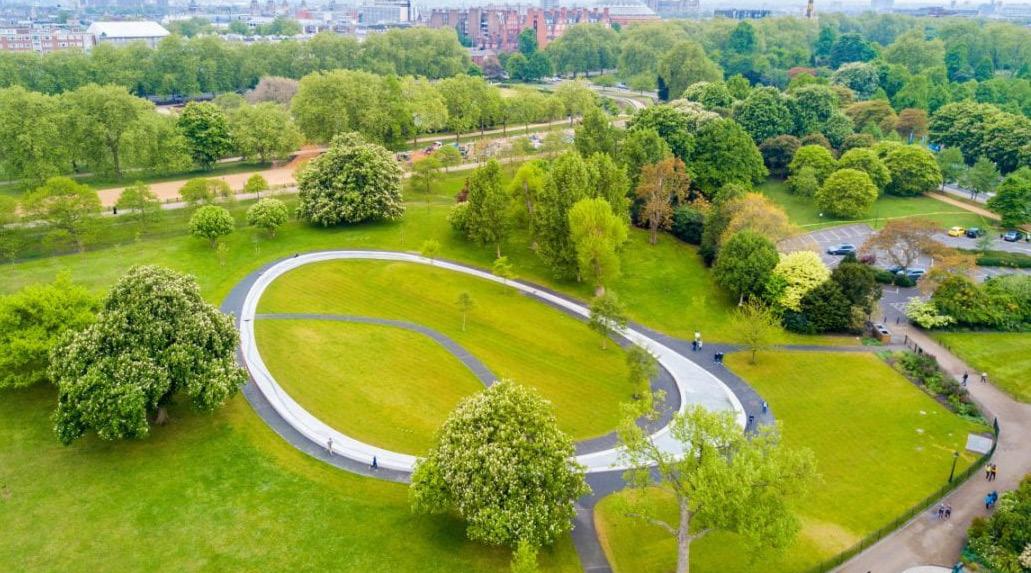
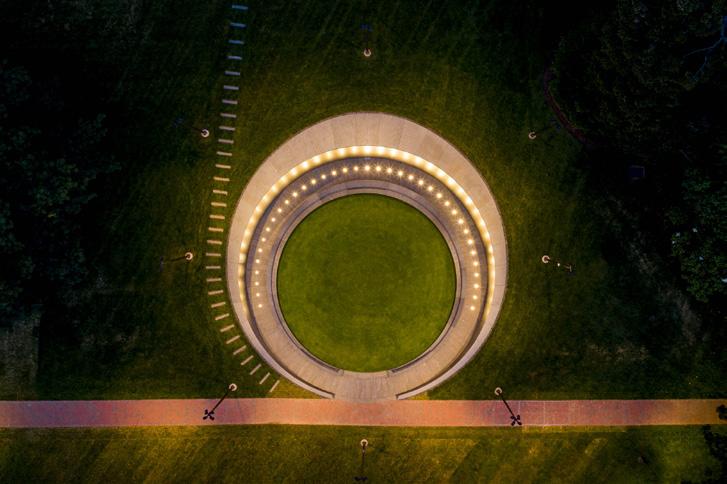

Water moves through the memorial, ending up in a continuous, reflective river, eternally memorializing Carrie’s life in the landscape. This memorial personalizes the narrative of this project by emphasizing the life of and documentation of Carrie Buck in honor of those whose history has been lost.

The landscape at the site revolves around seasons and changes, working with the event schedule of the Blackburn Inn, and symbolizing the cycles of life, plants and trees bud, bloom, and die each year. Deciduous trees shade the outdoor spaces of the landscape during the summer, bloom brightly during autumn, and drop their leaves in the winter, creating direct views from the memorial to the Inn.


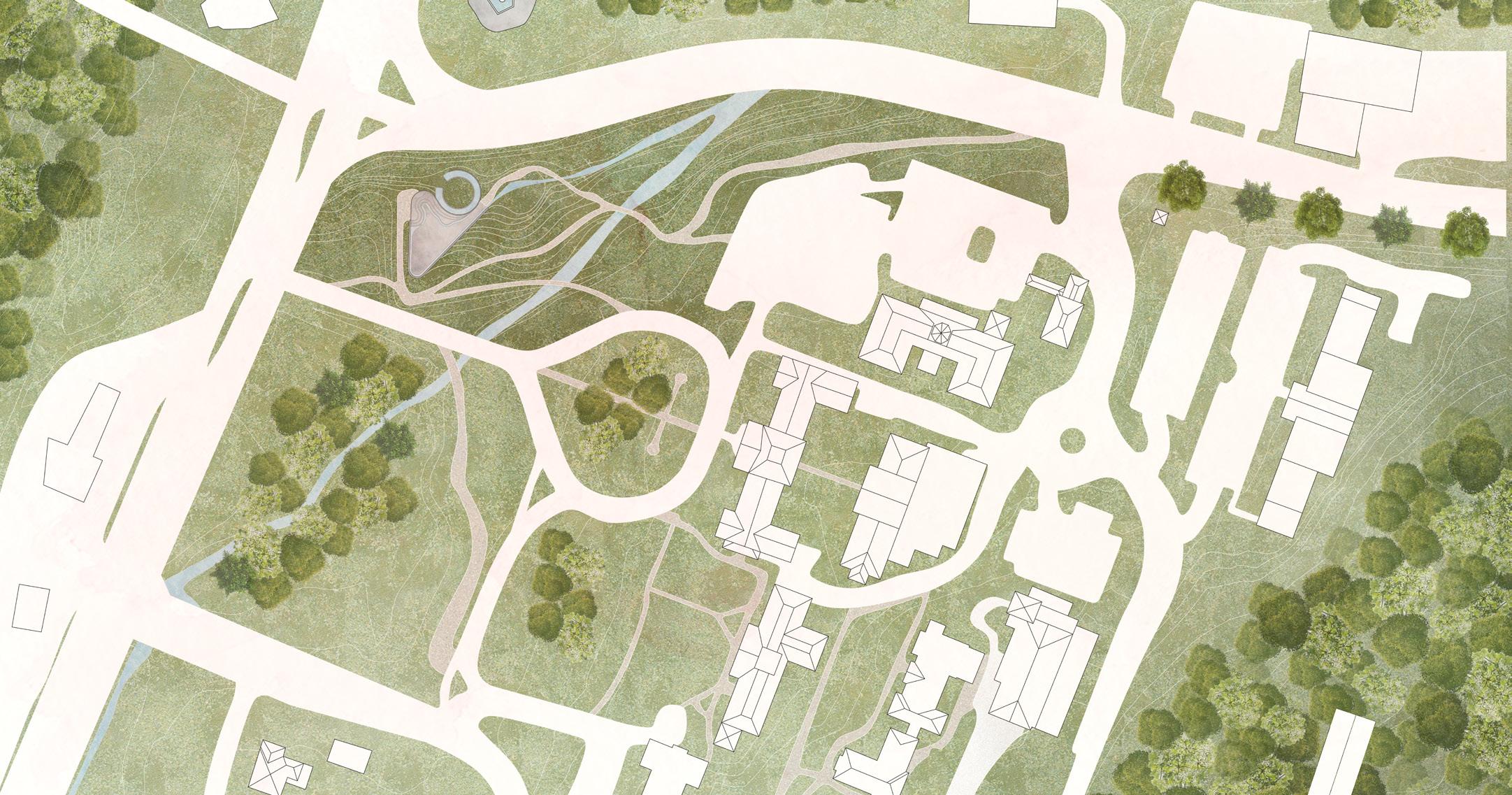
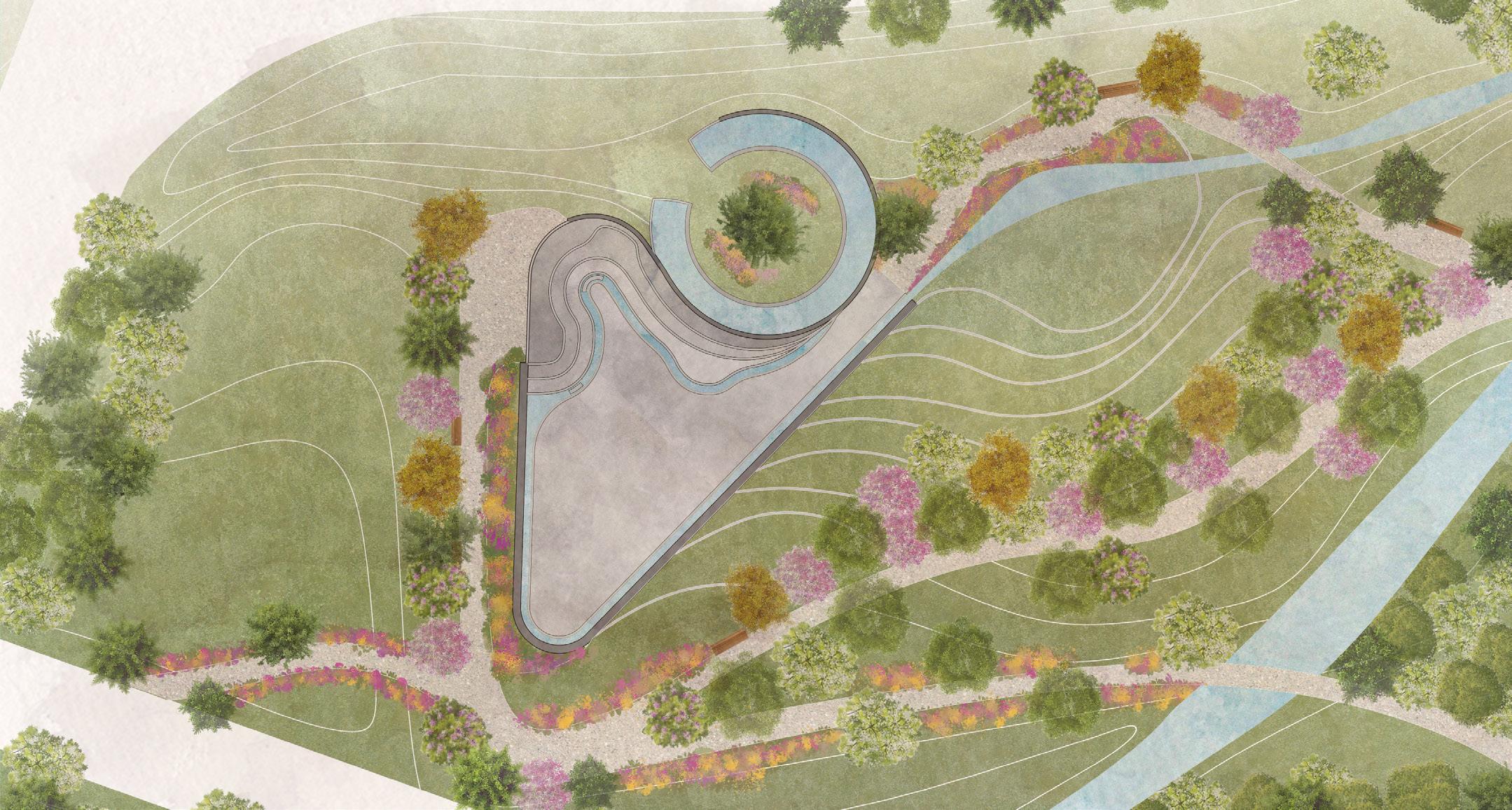
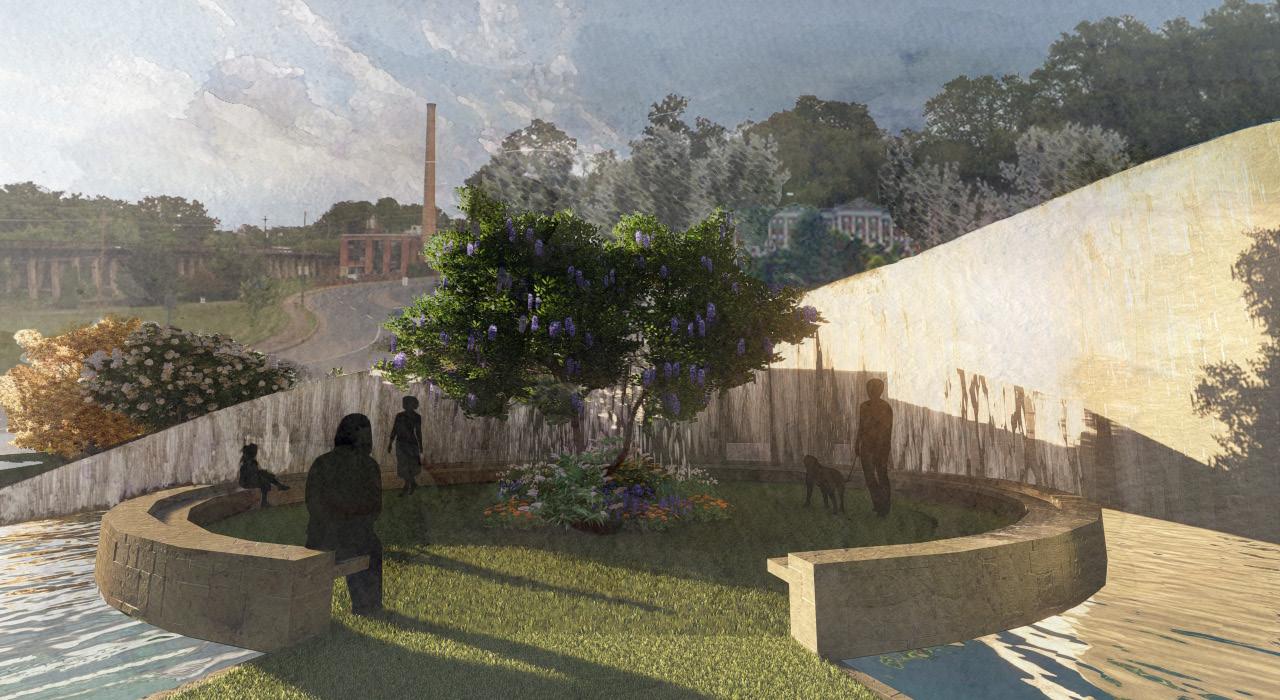
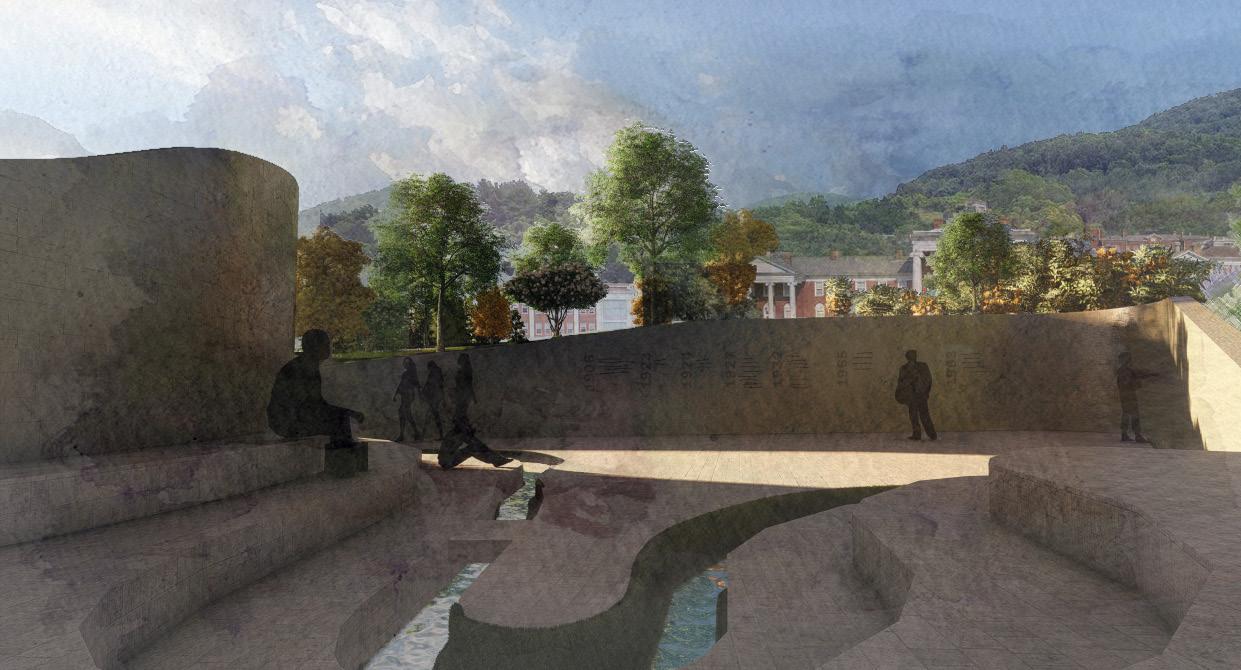
EXISTING
SITE PICTURES

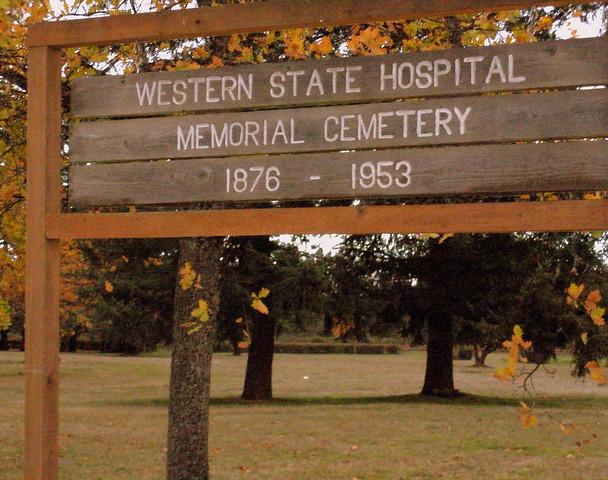
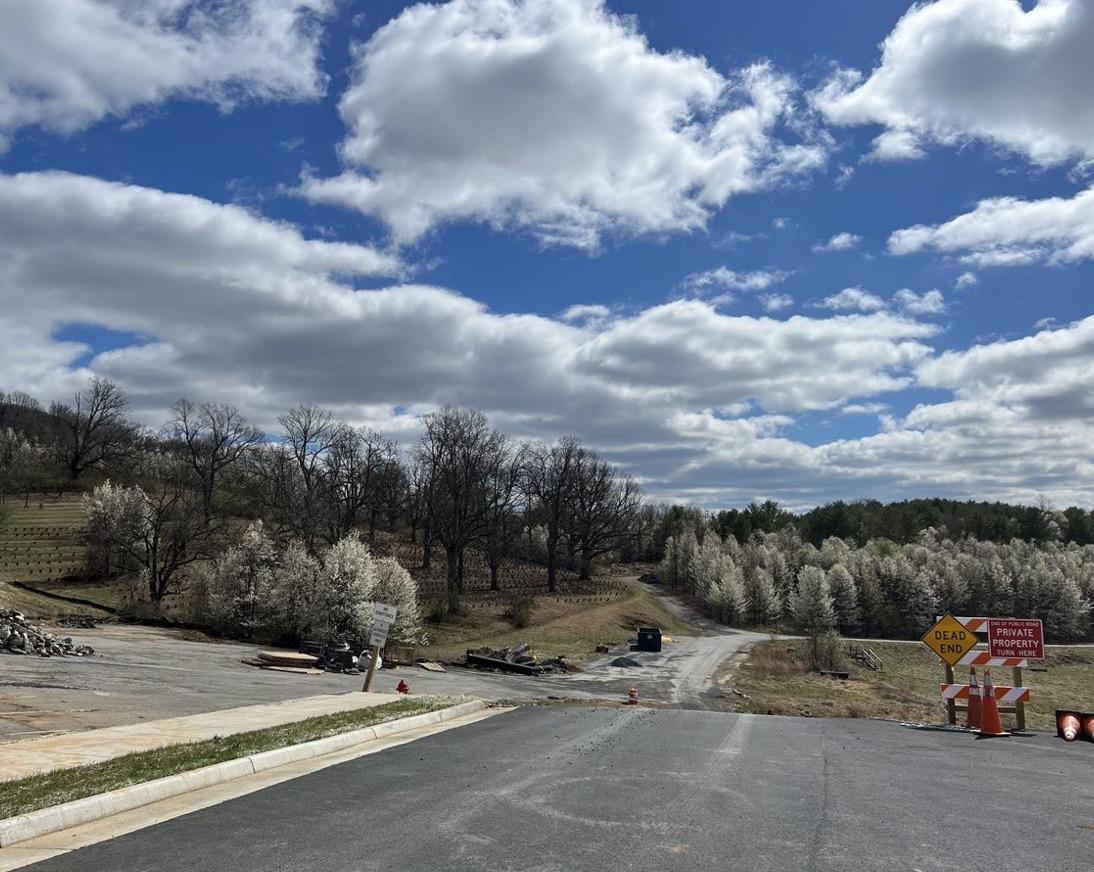
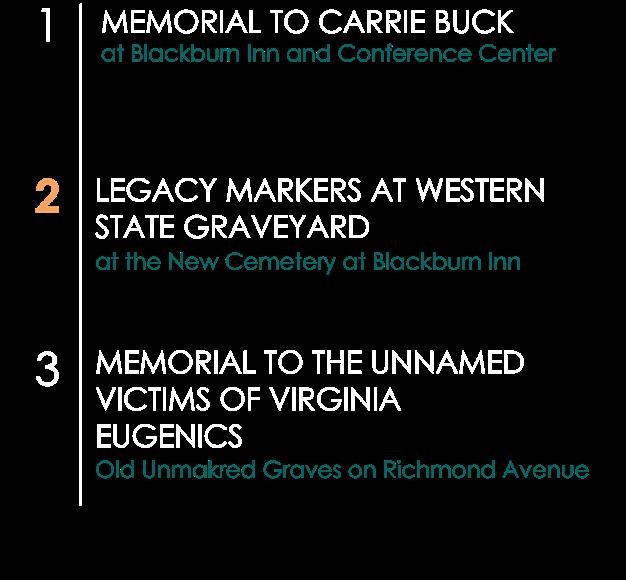
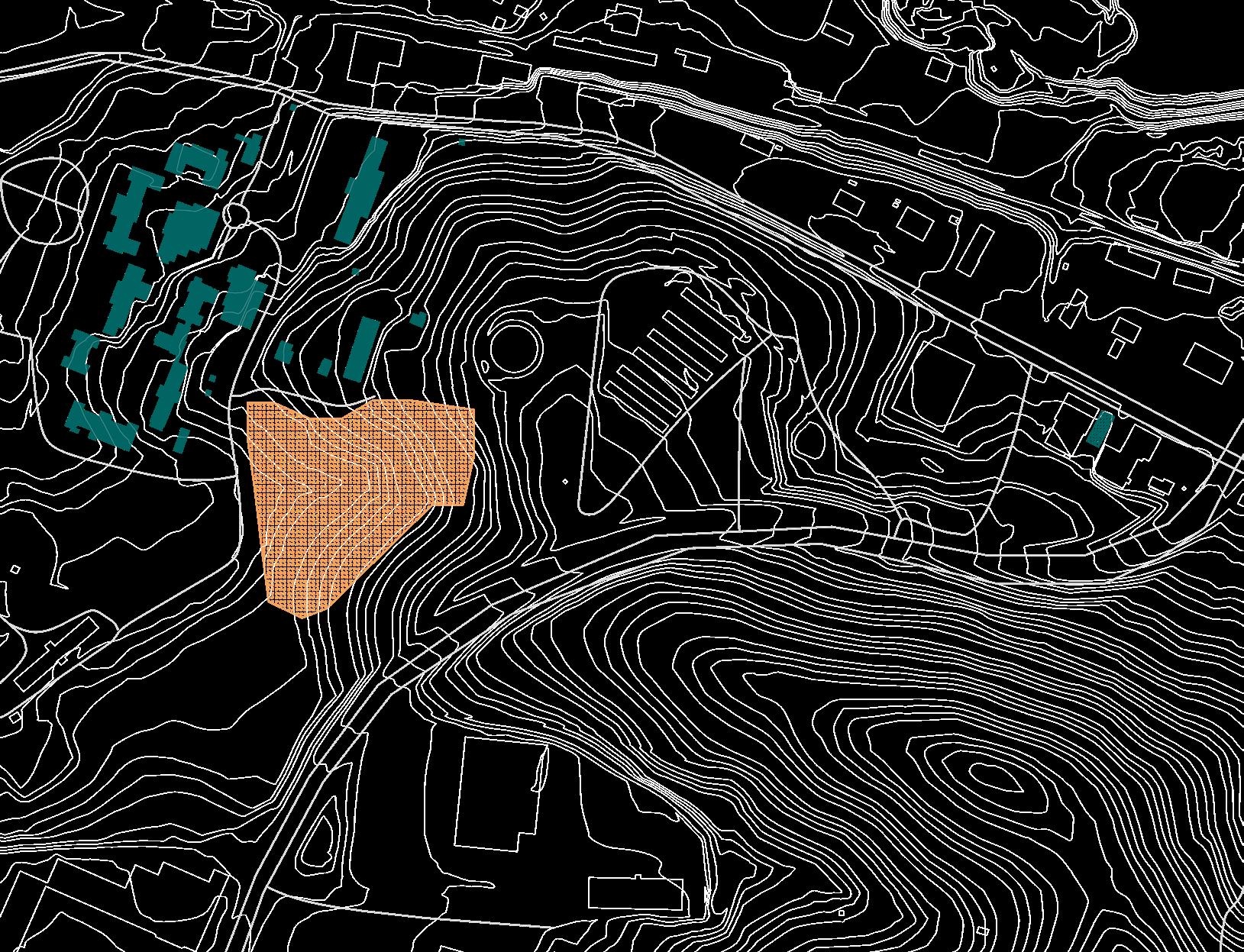
The second intervention is Legacy Markers at the new cemetery behind the Blackburn Inn. At this site, approximately 2,200 headstones mark the graves but include no information is included about the person it marks. This reflects the lack of archival evidence during the eugenics period, specifically representing the exploitation of minority communities. The site is currently privatized by the Inn and inaccessible to the public, thus a secondary entrance from a major road is added for public access. This intervention personalizes those headstones by humanizing and dignifying those headstones through reflections and silhouettes. The lines of the graves are framed between reflective panels, that project the shadows of those passing through the path between the panels with different levels of transparency throughout the day.
A water path stitches the panels together and creates a secondary level of reflection. Each pair of panels frames a row of graves and the height of the panels corresponds to the number of graves in that line.
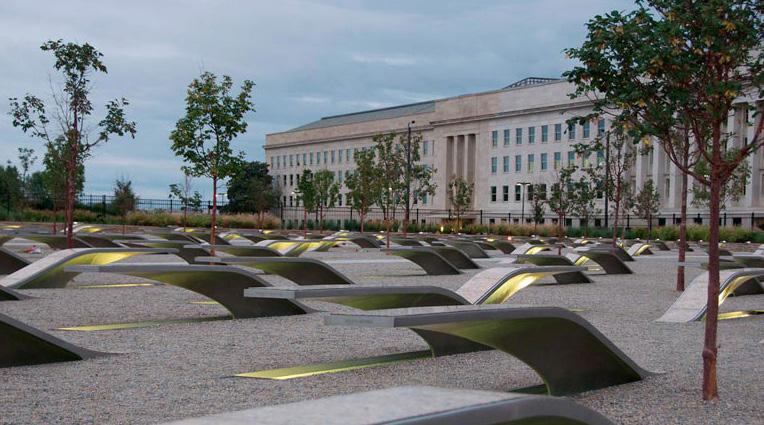
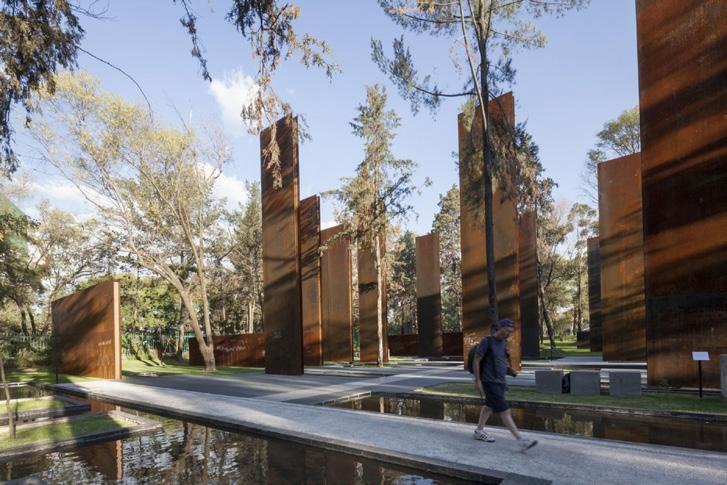
Re ective panels | Quanti es graves Winding Path | Contemplative journey



Panel Height | Corresponds to number of graves in row

PROGRAM DIAGRAM
Panel Orientation | Frames the graves
LANDSCAPE CATALOG


Re ective silhouettes | Humanizes graves Water path | Stitches together the graveyard Landscaping | Evergreen trees and blooming trees symbolize life
FORM DIAGRAM
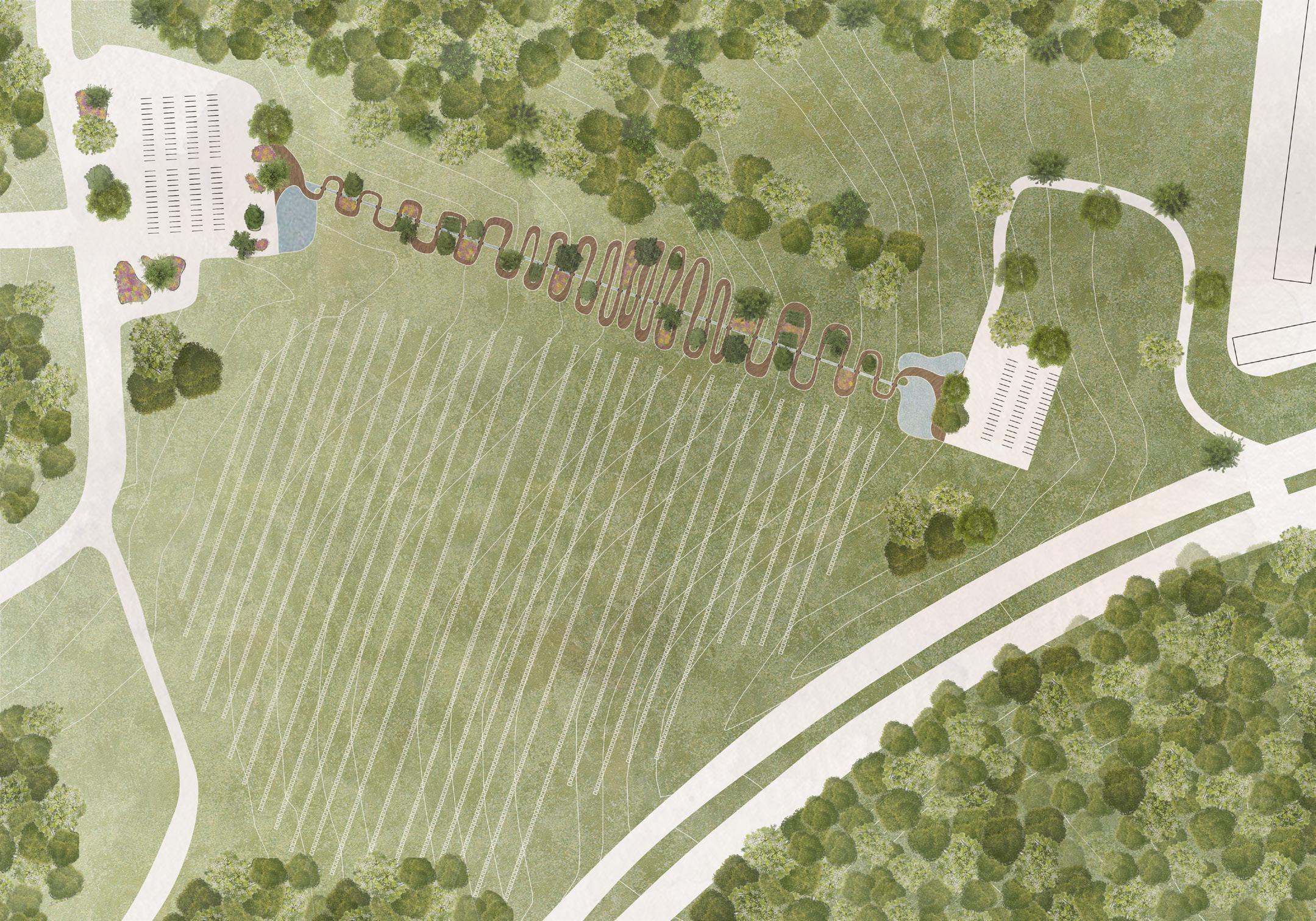


SITE PICTURES
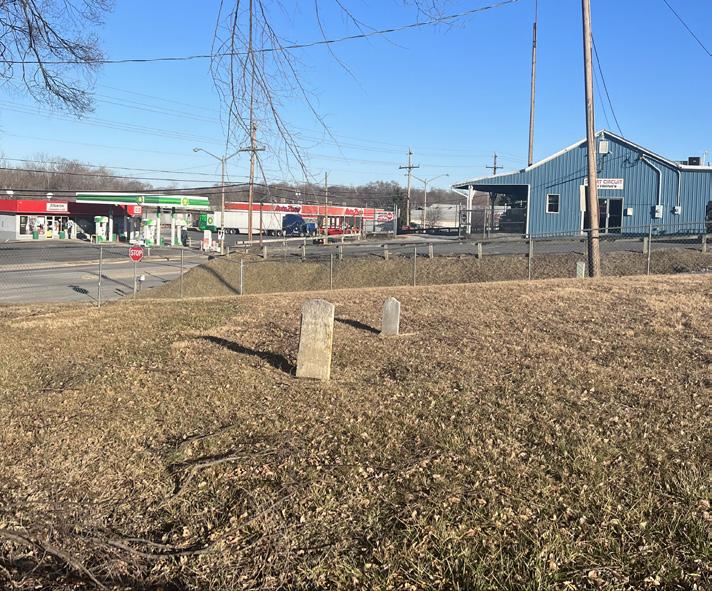
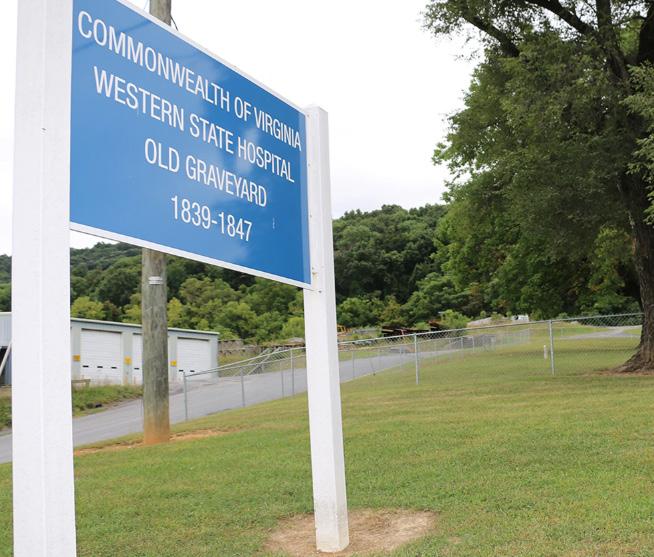

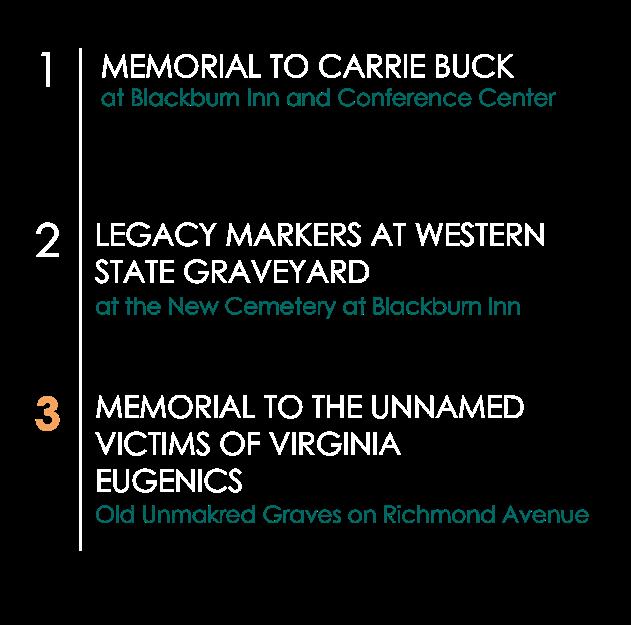
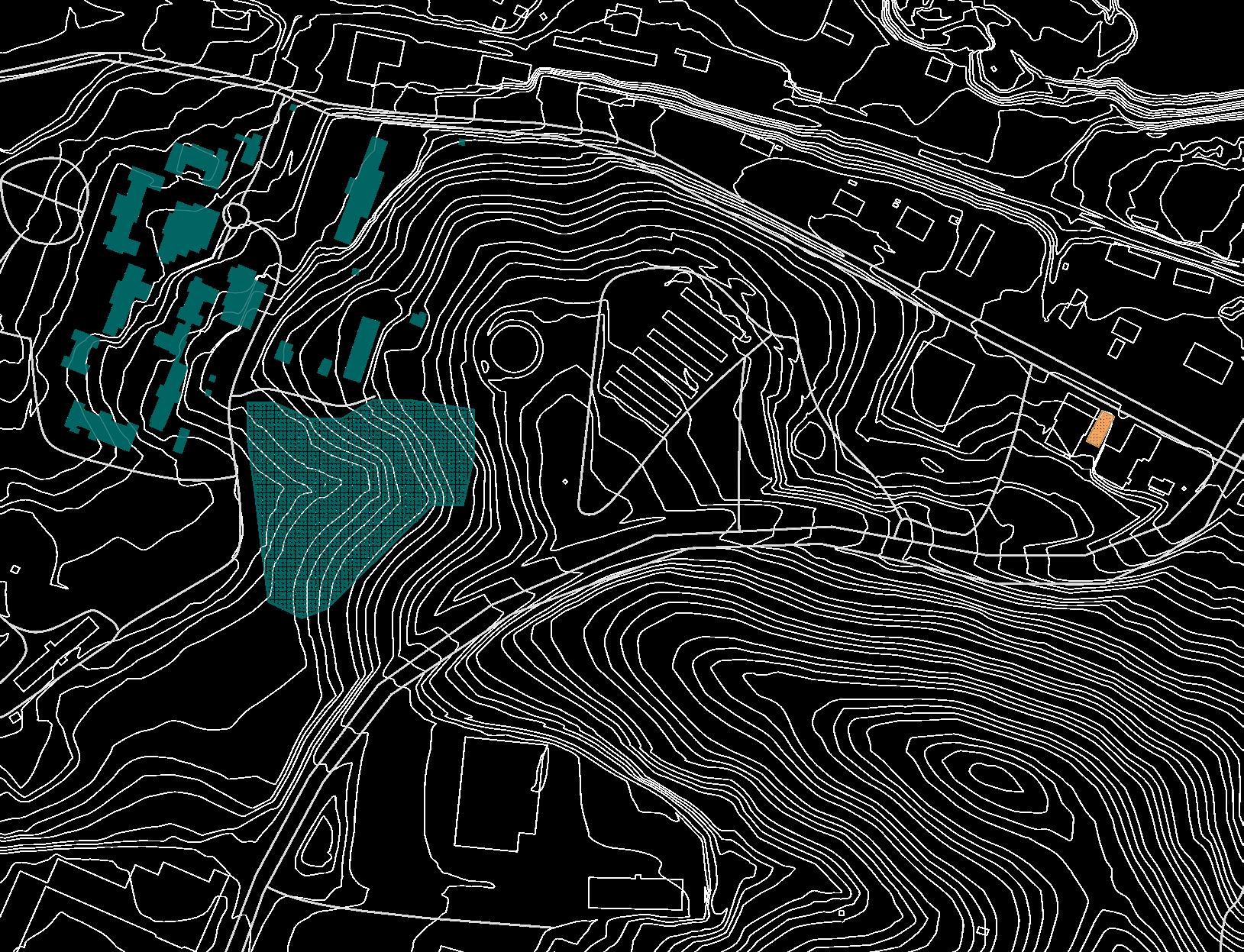
The third intervention is a Memorial to the Unnamed Victims of Virginia Eugenics at the old, unmarked cemetery. Used for 15 years, only 5 markers lie on the site, currently fenced off by an obscure fence. The intervention starts by lining the Western perimeter of the grave with lined with slate panels, aligned in the direction of the legacy markers at the new cemetery, connecting the two sites. These slate panels are intended to become personalized symbols of the lives of people lost to 20th century eugenics by encouraging written inscriptions of stories by those visiting the site.


The eastern perimeter is lined with a granite wall, punctured with 145 blocks that represent the 145 people buried at the site. Throughout the day, the movement of the sun over the site casts shadows onto the landscape, creating “headstones” for each of the graves. At night, each box is lit up, blending the dark slate and granite into the night sky, illuminating the lives of those lost. The perimeter is redefined with contemplative spaces for visitors. The landscape catalog at both graveyards uses evergreens and flowering species to bring color, activity, and life to the sites throughout the entire year.
